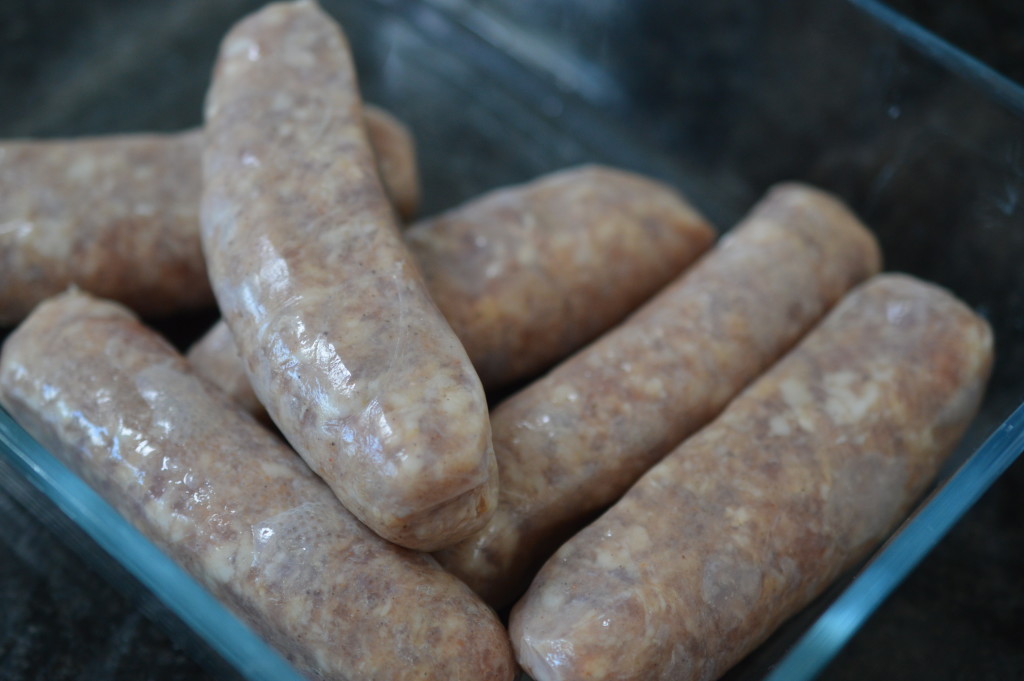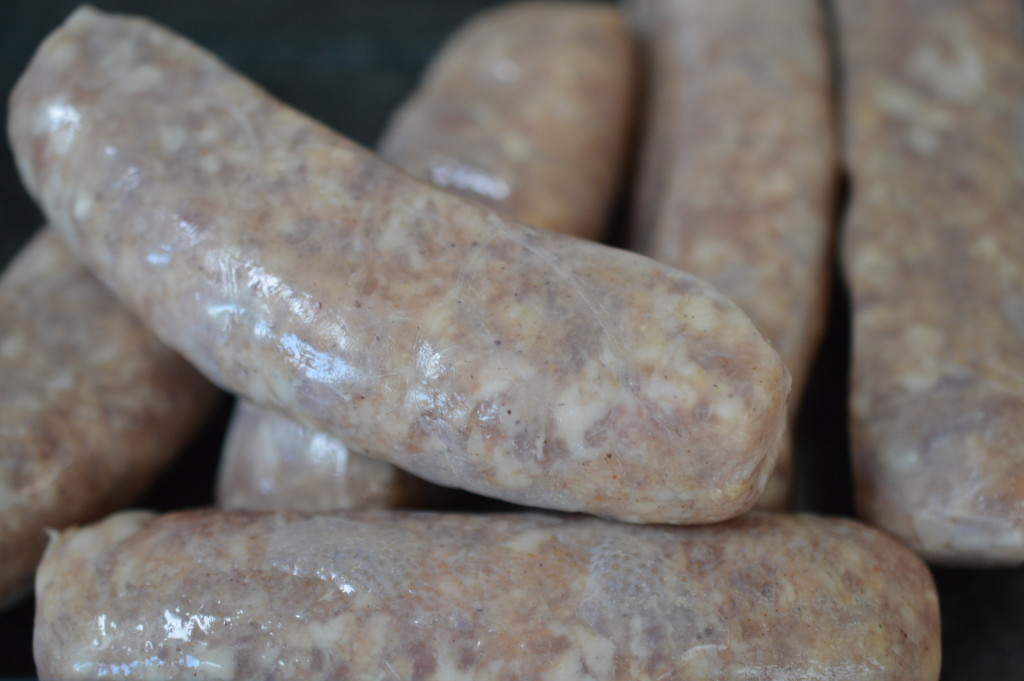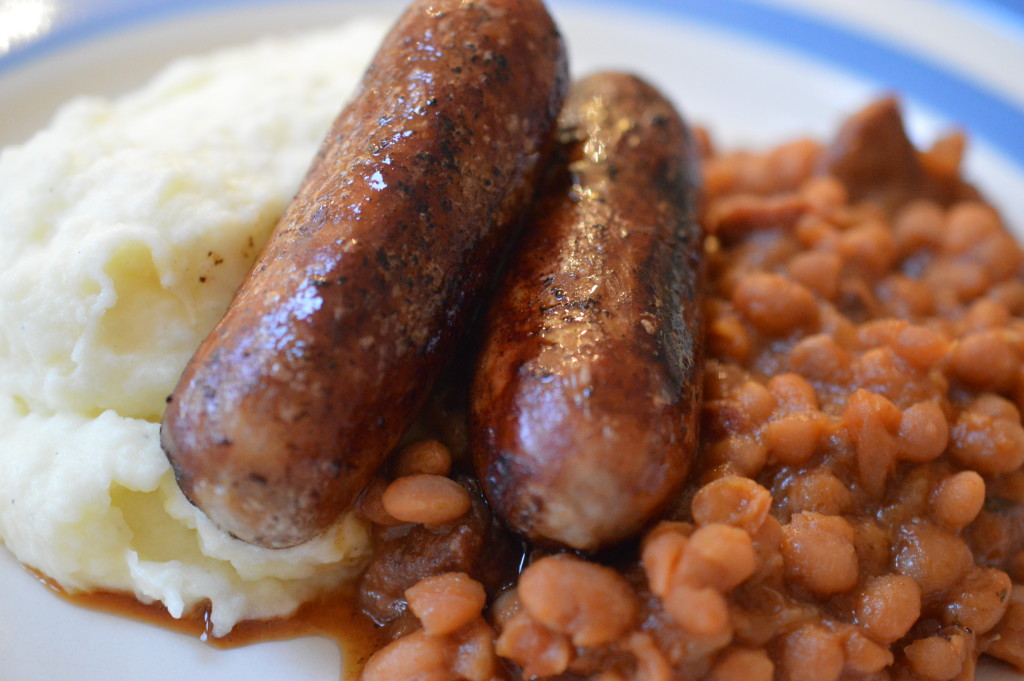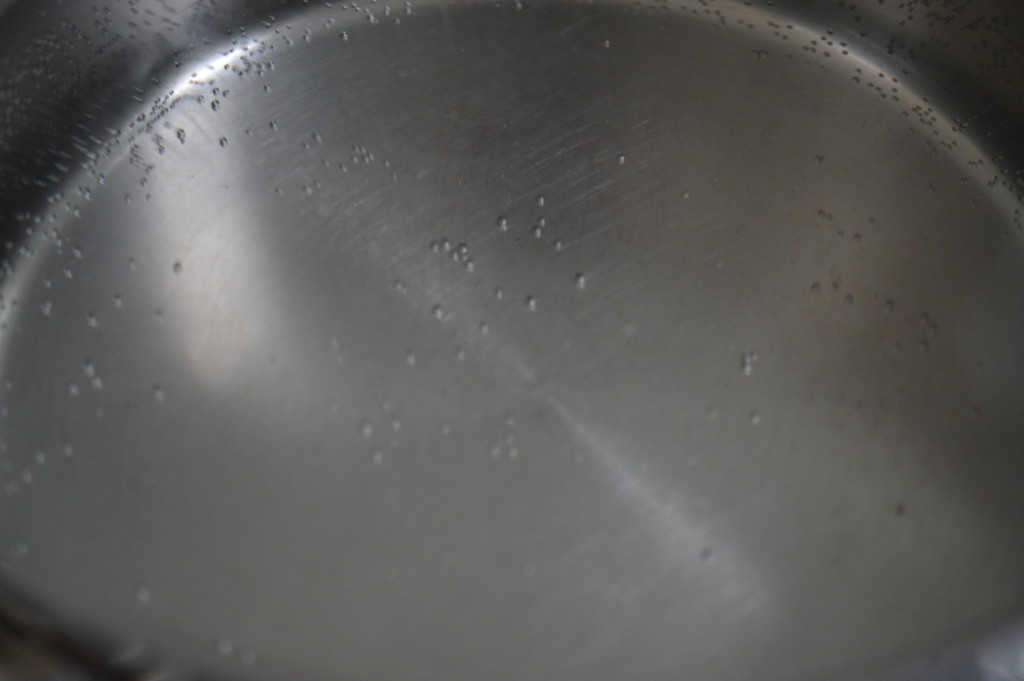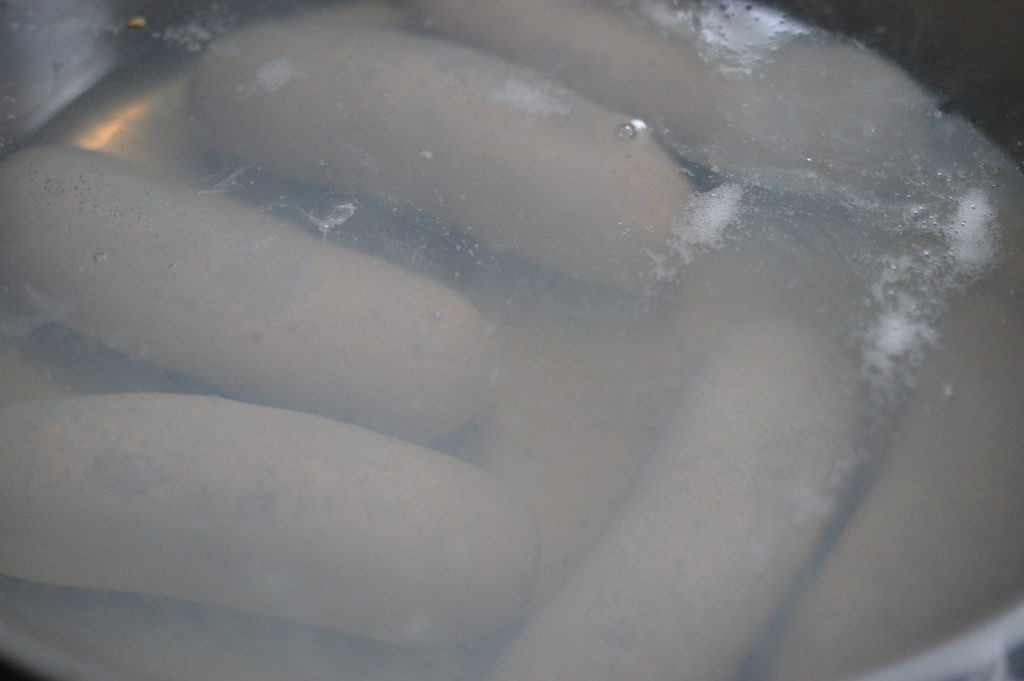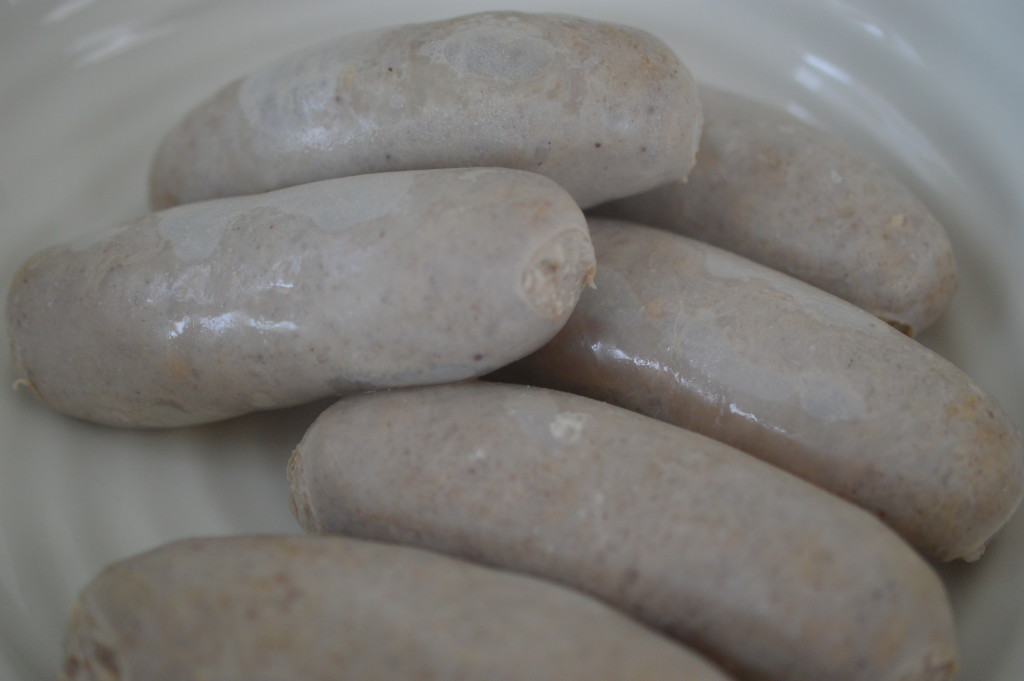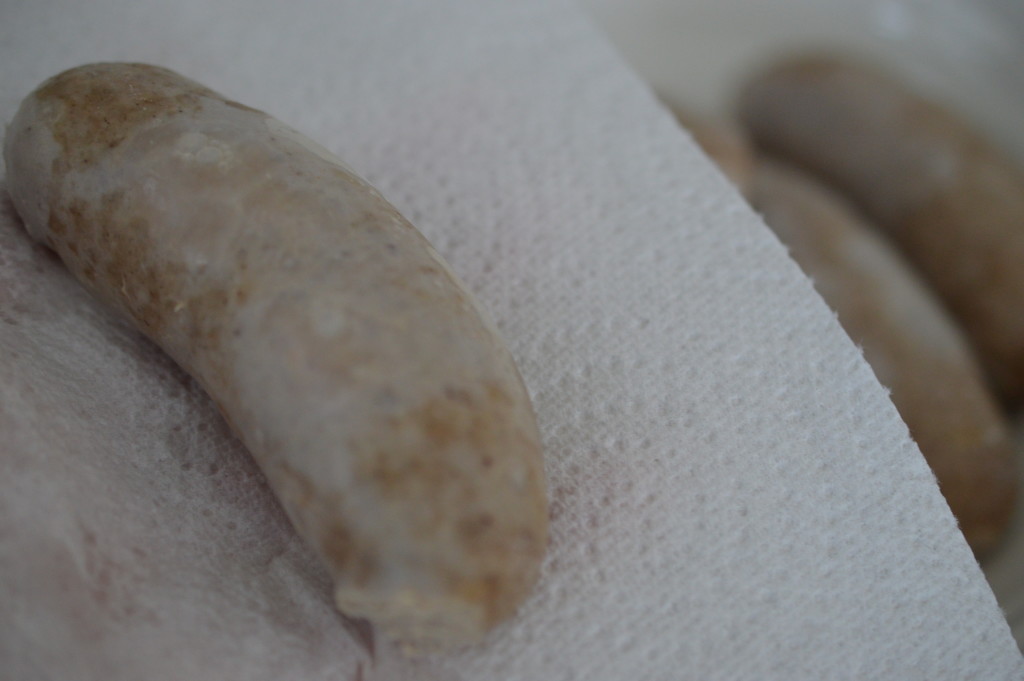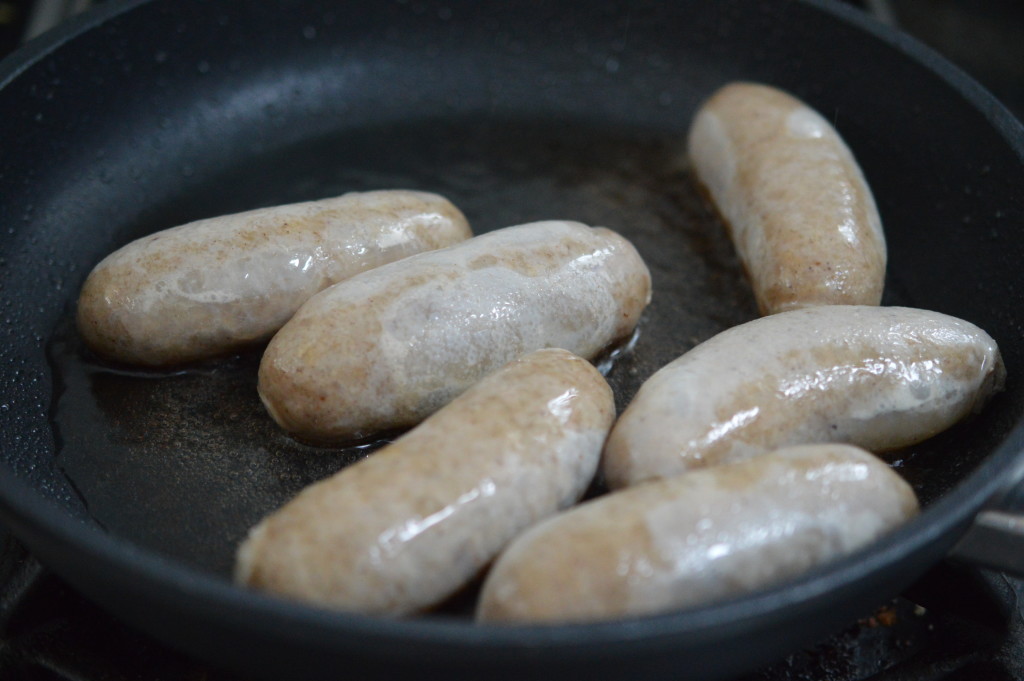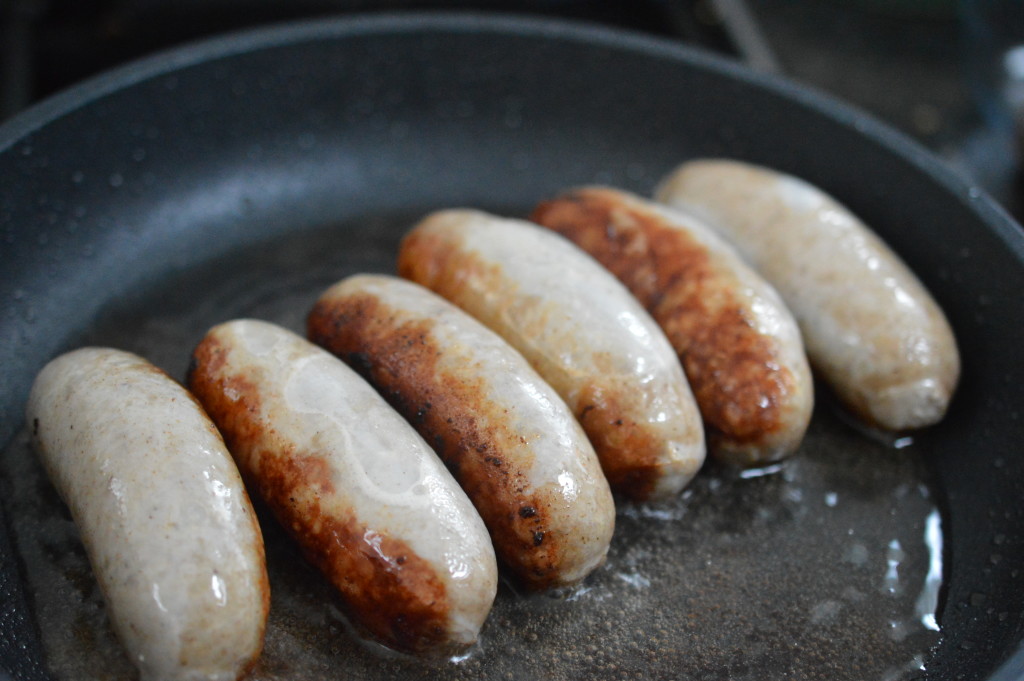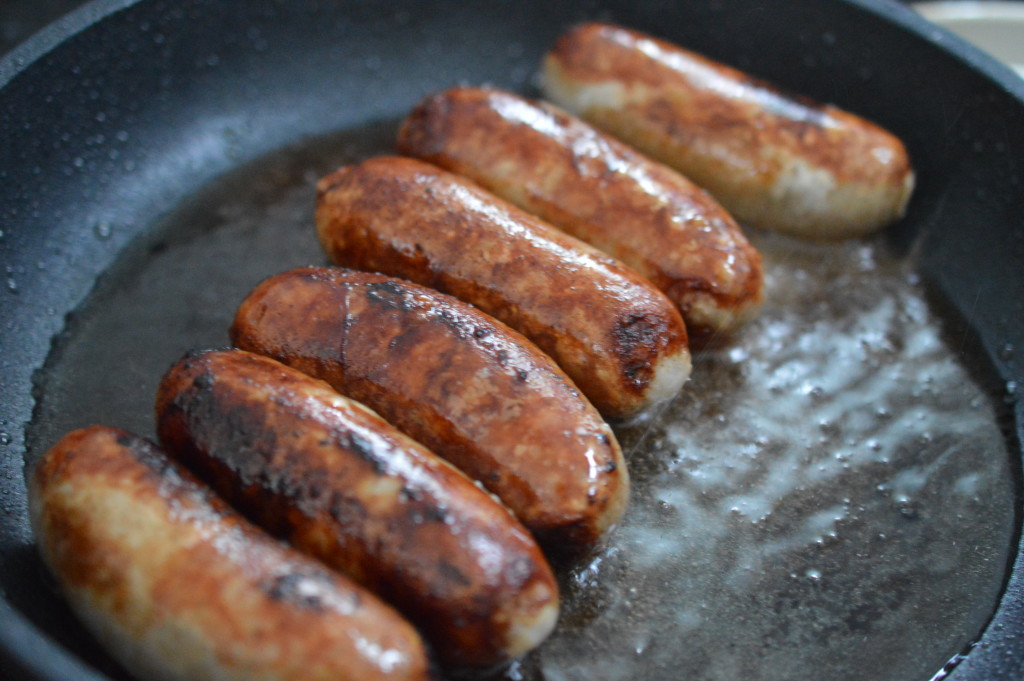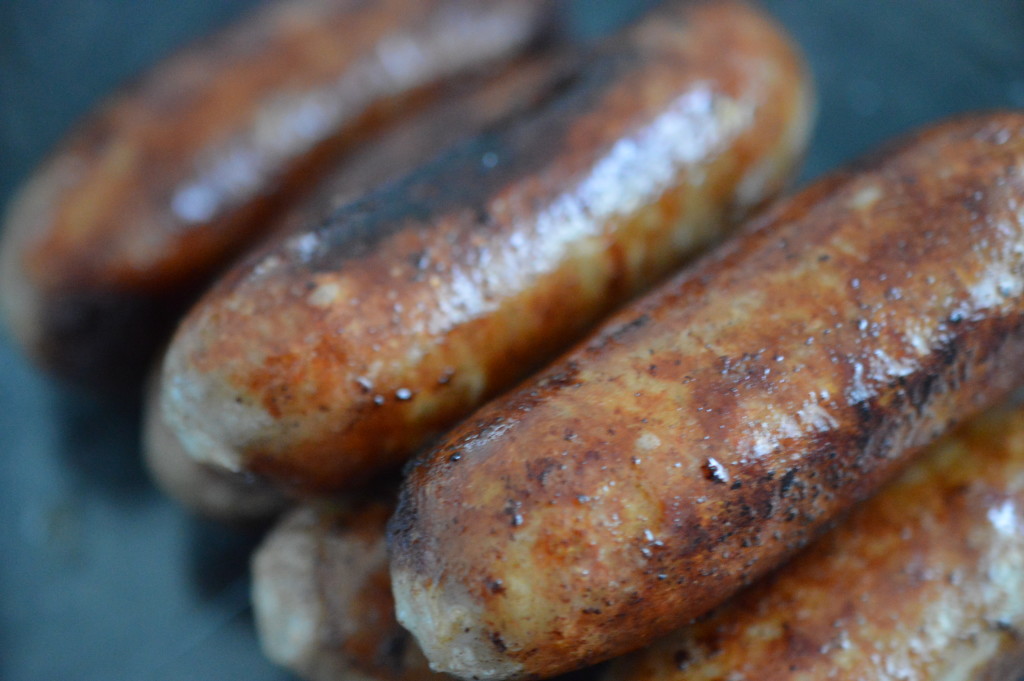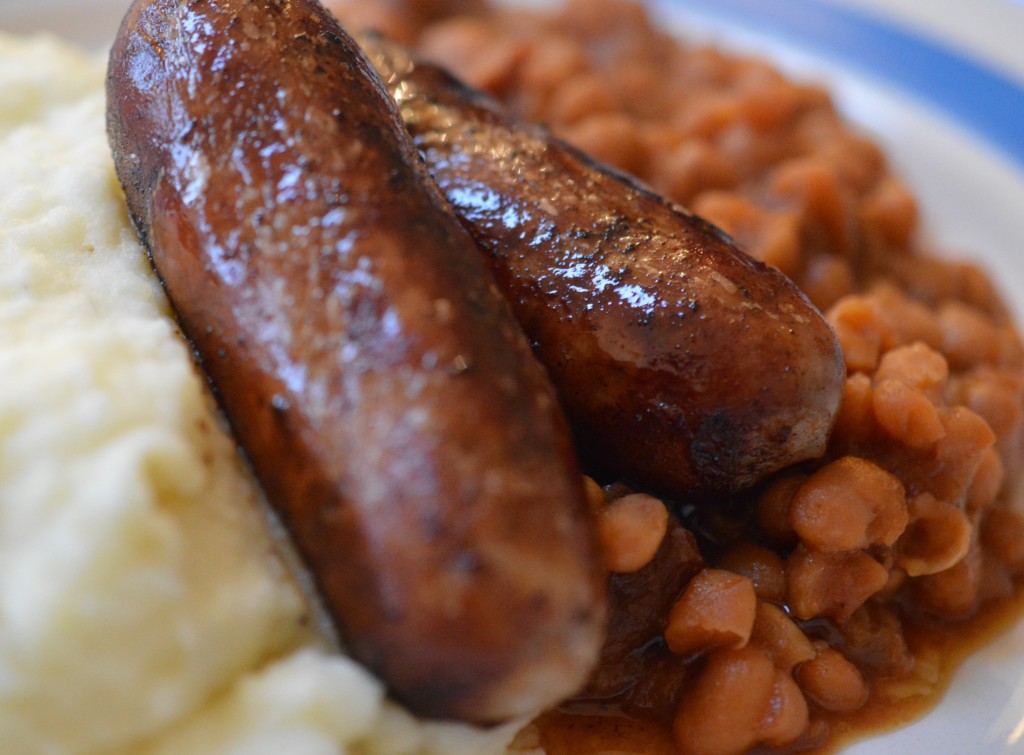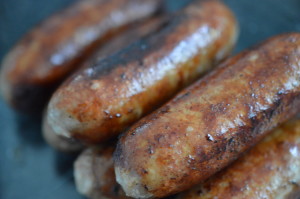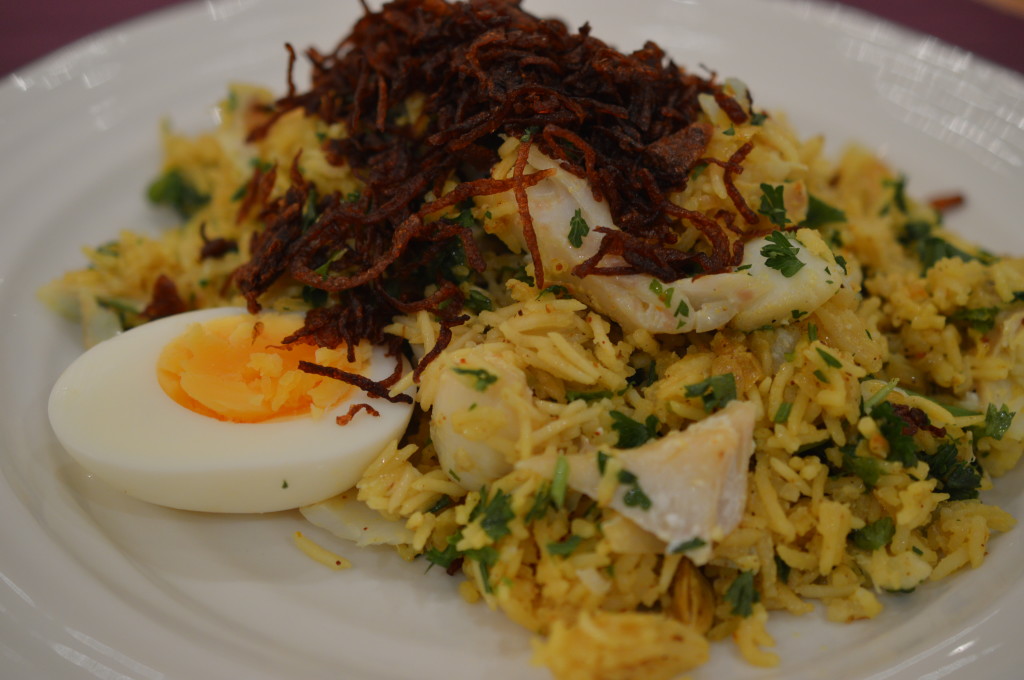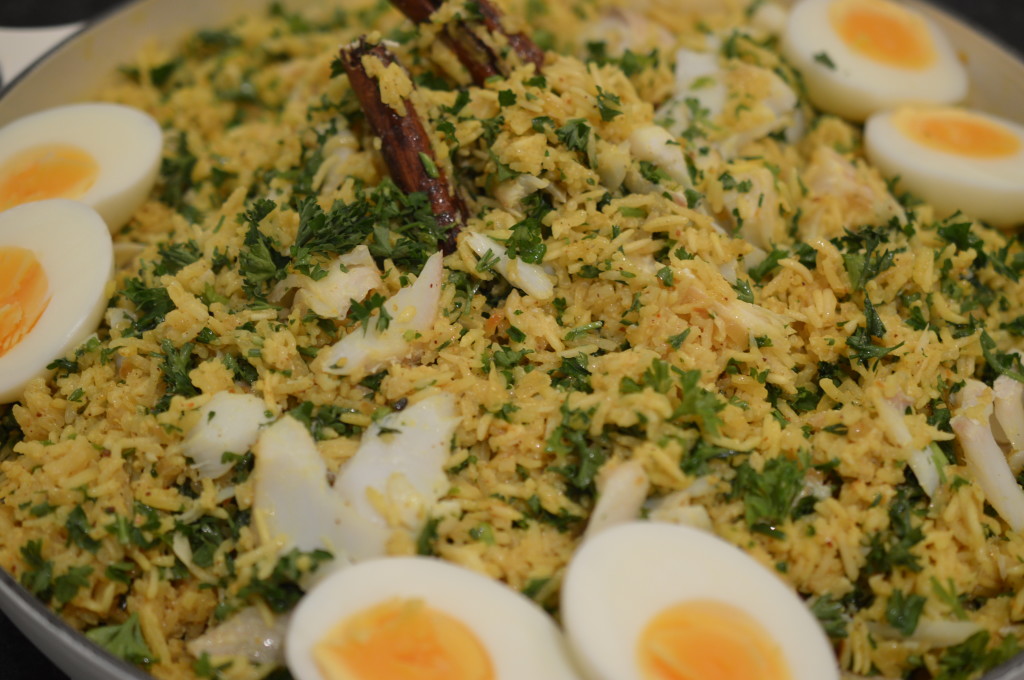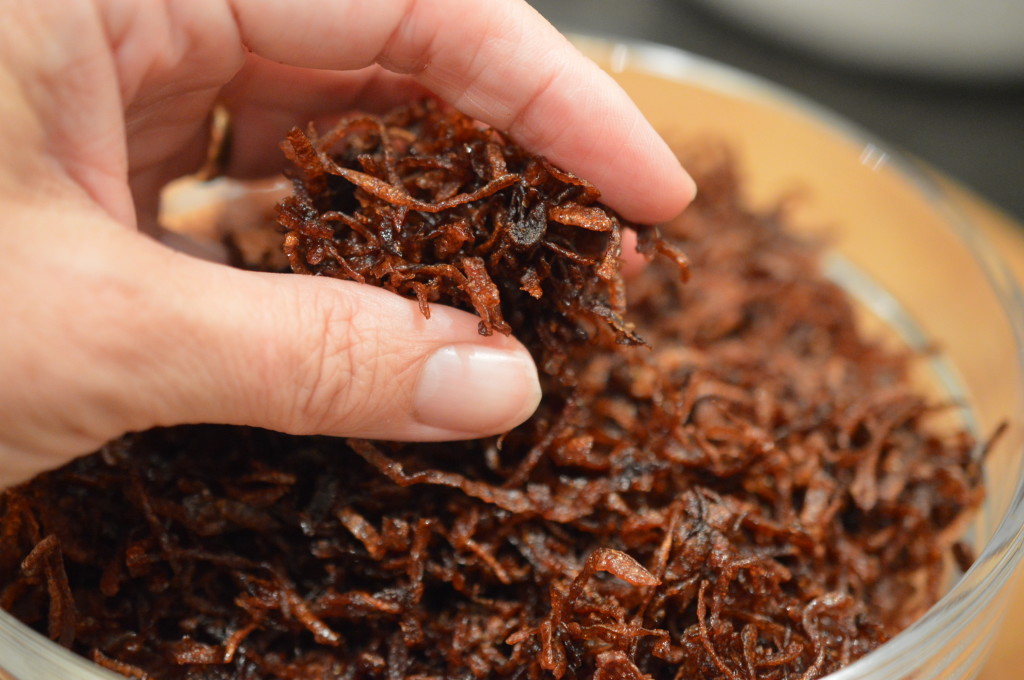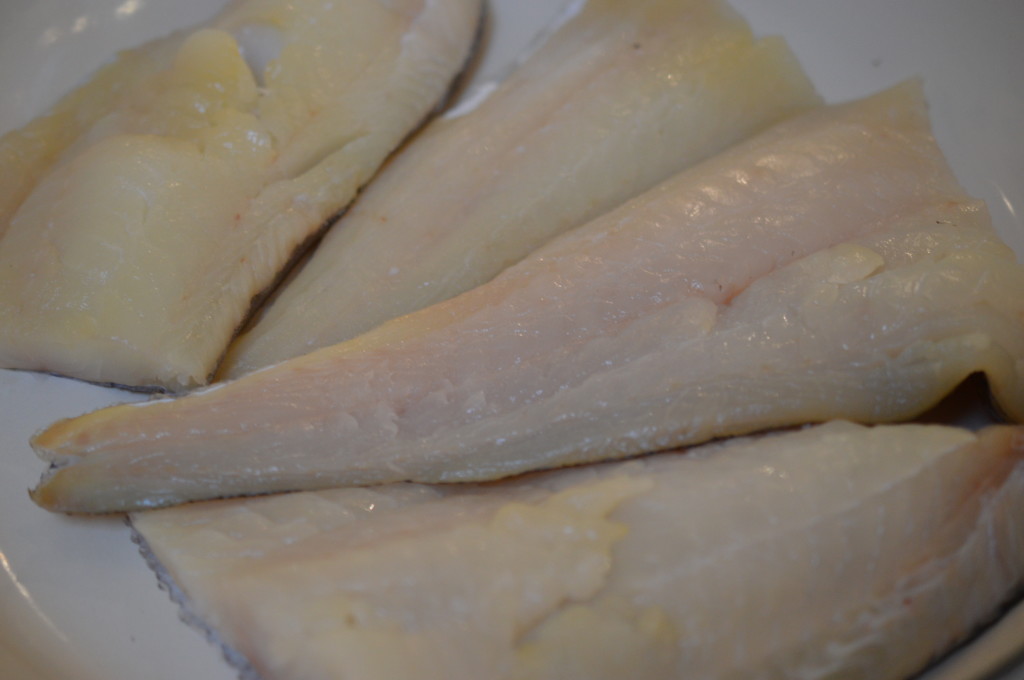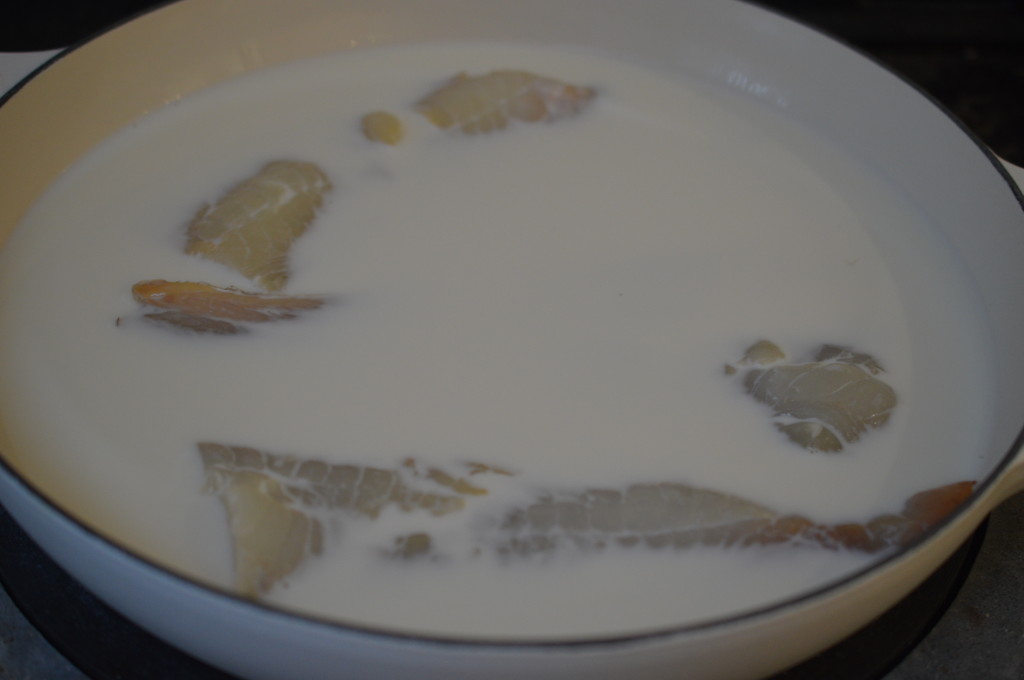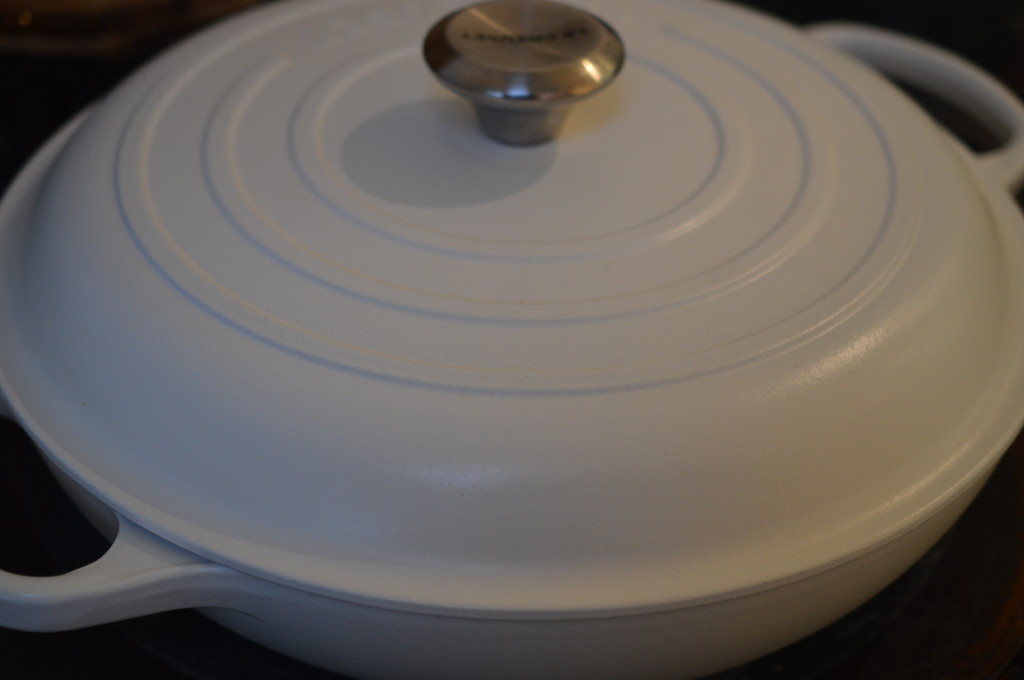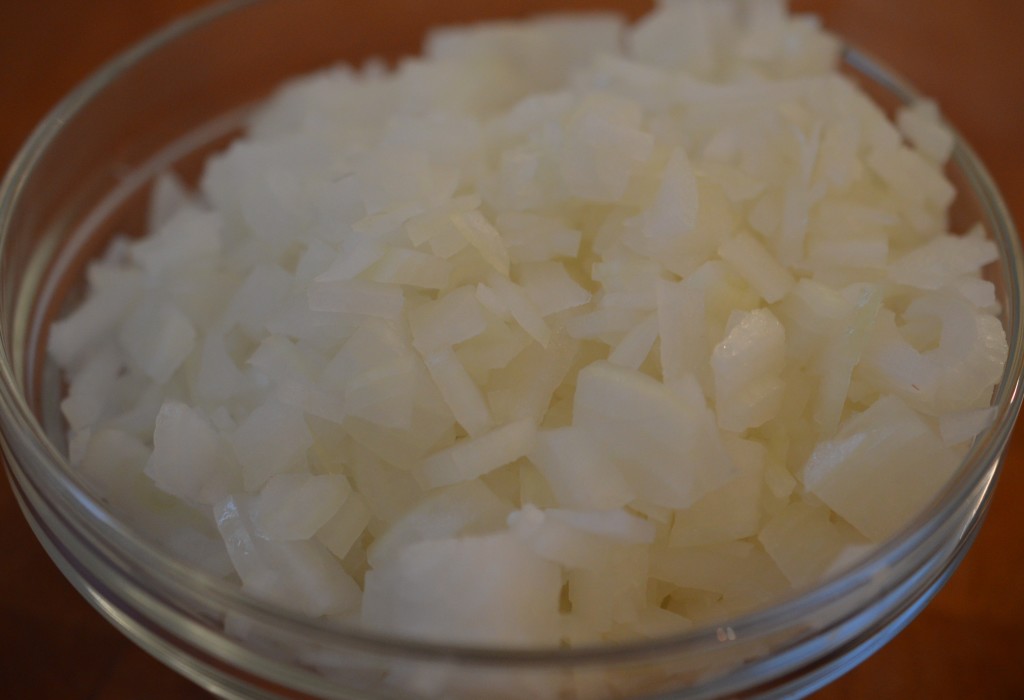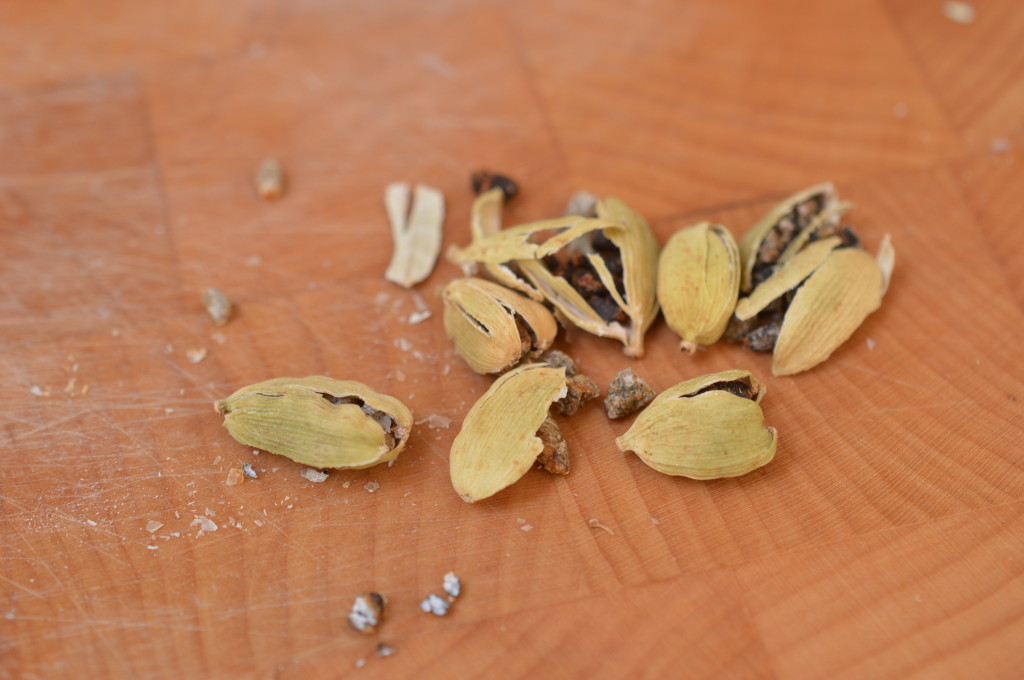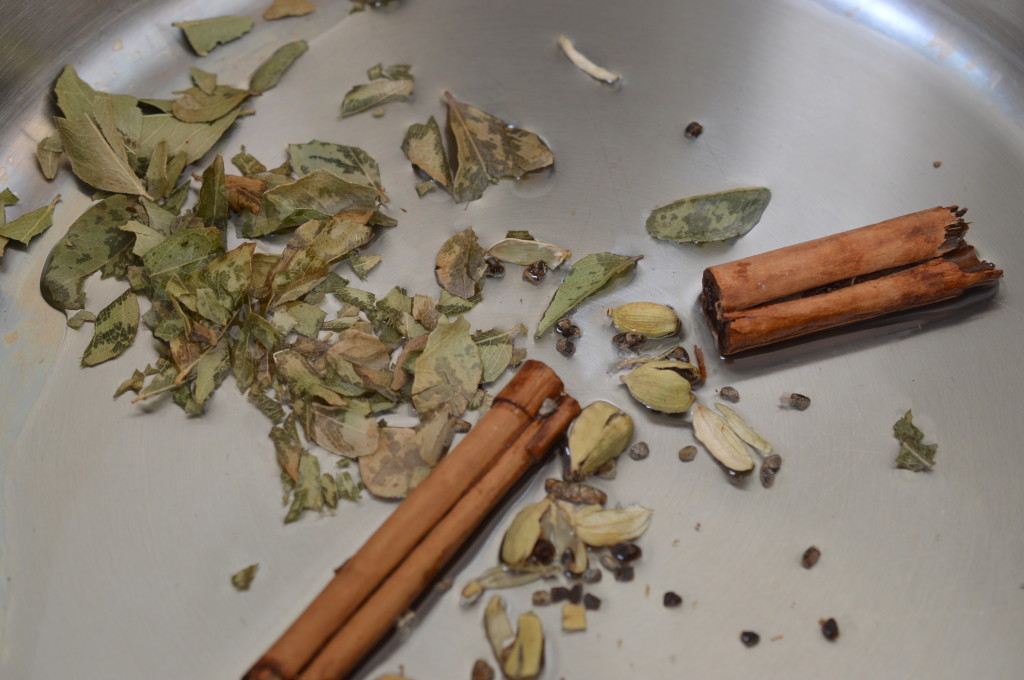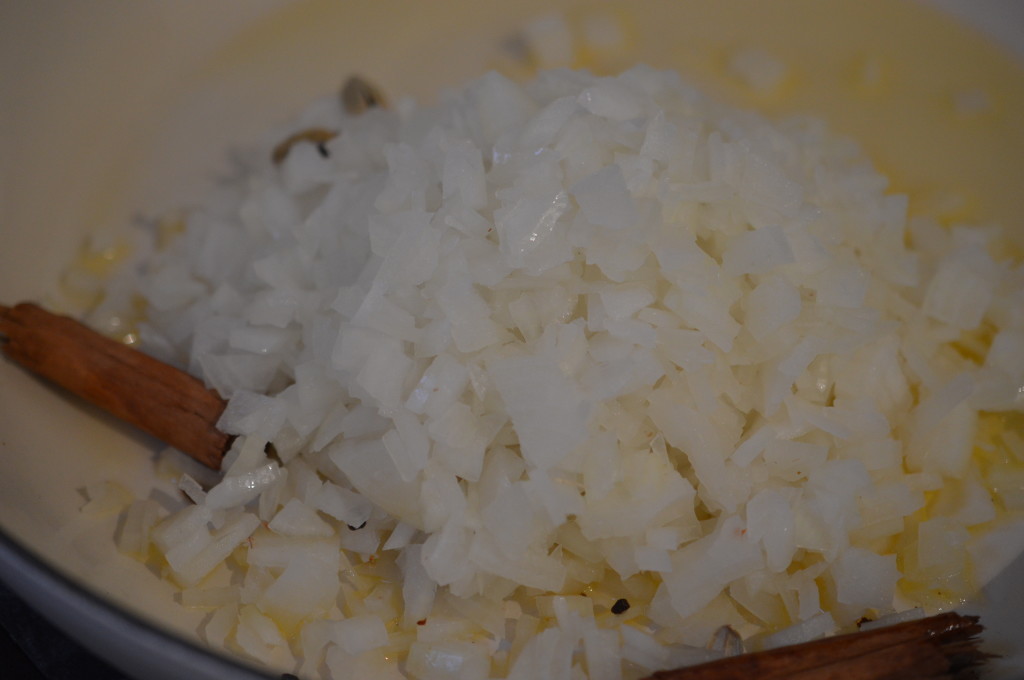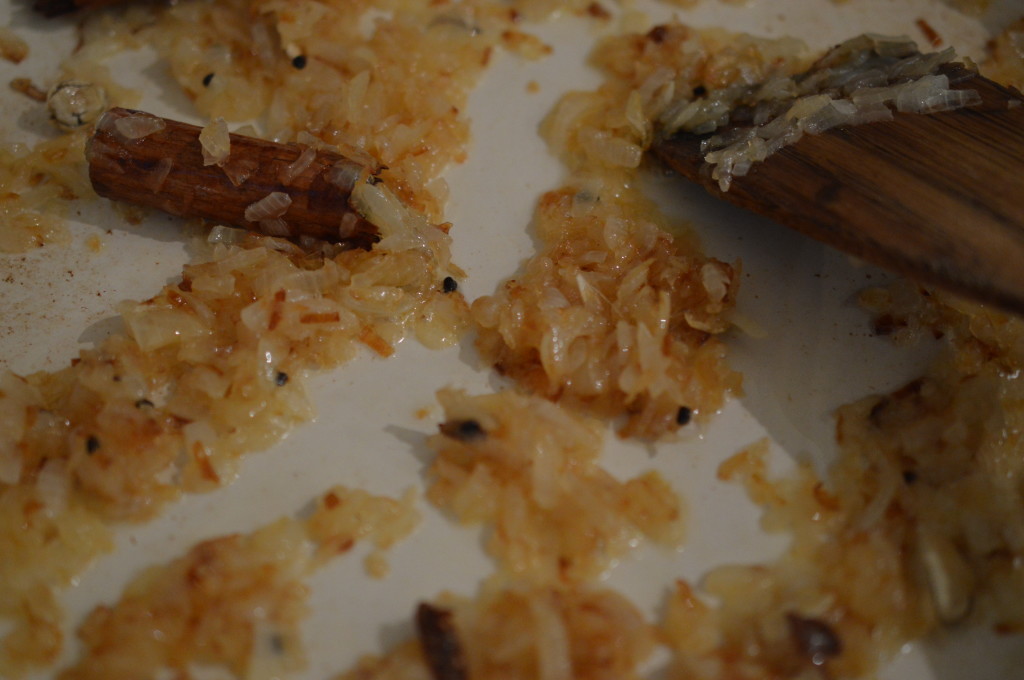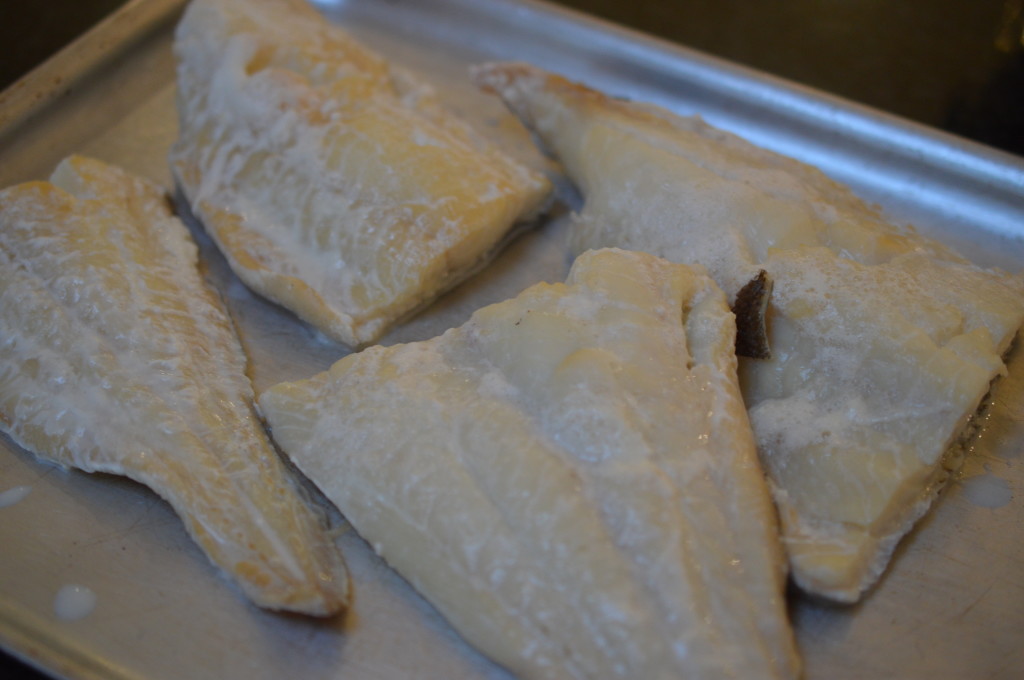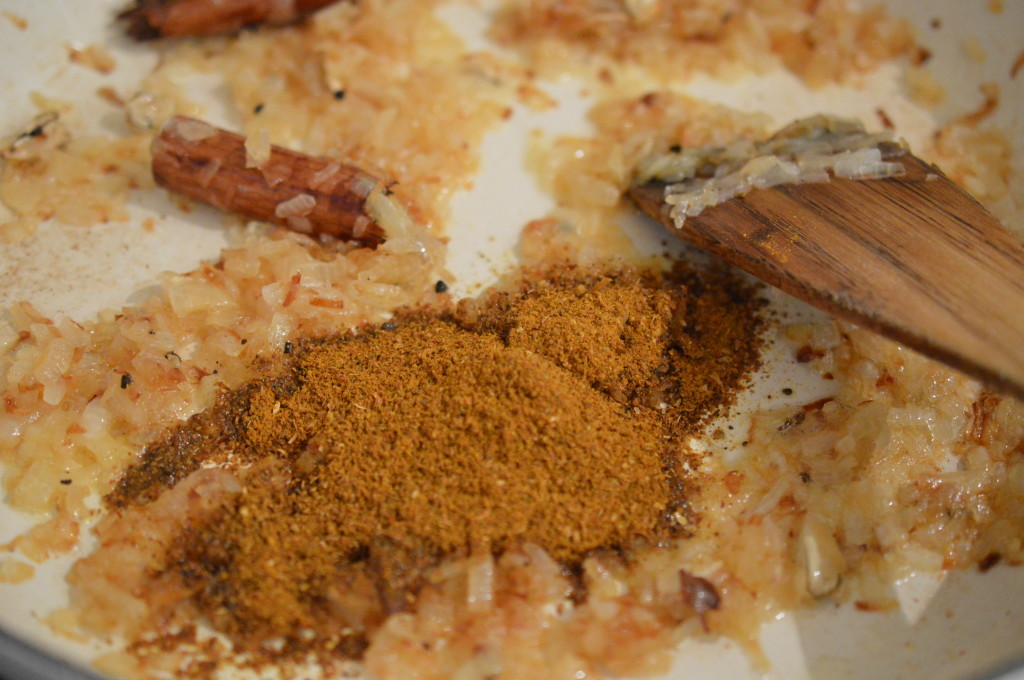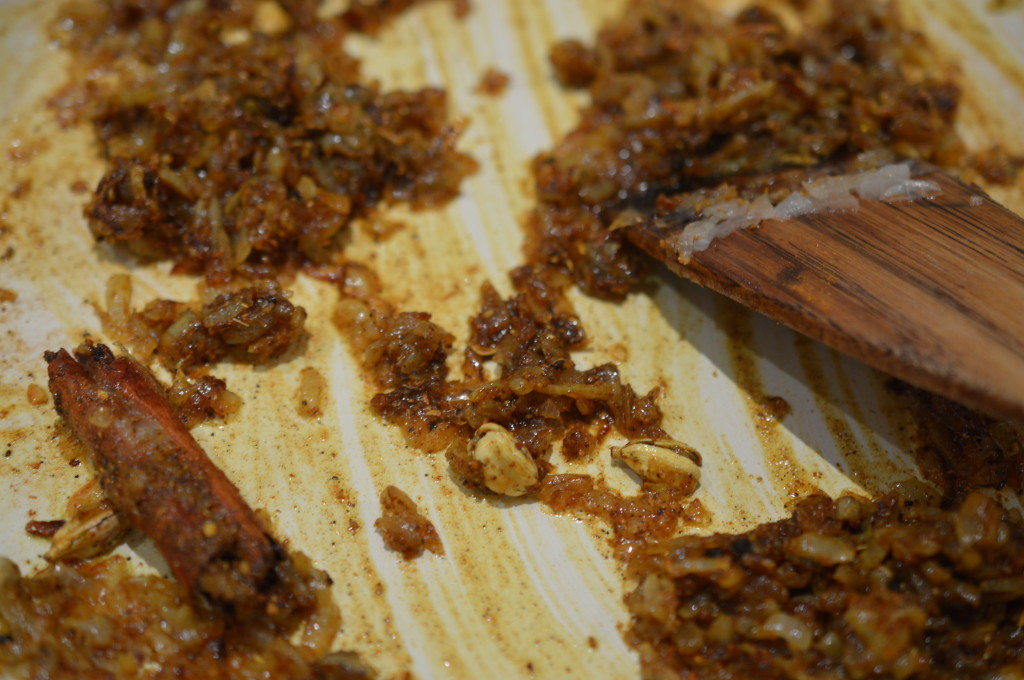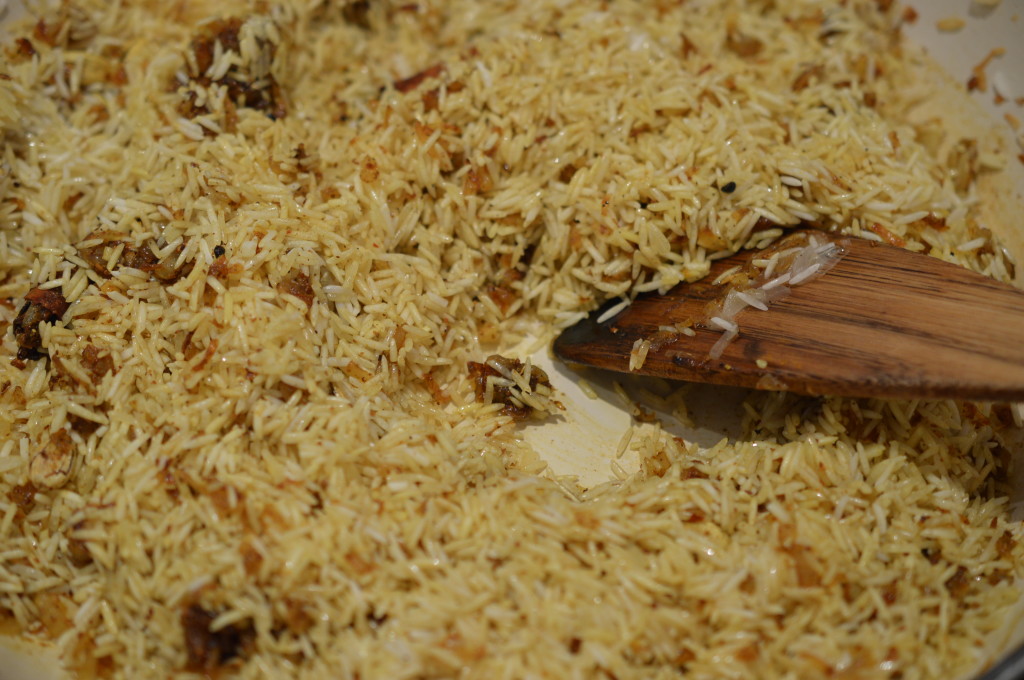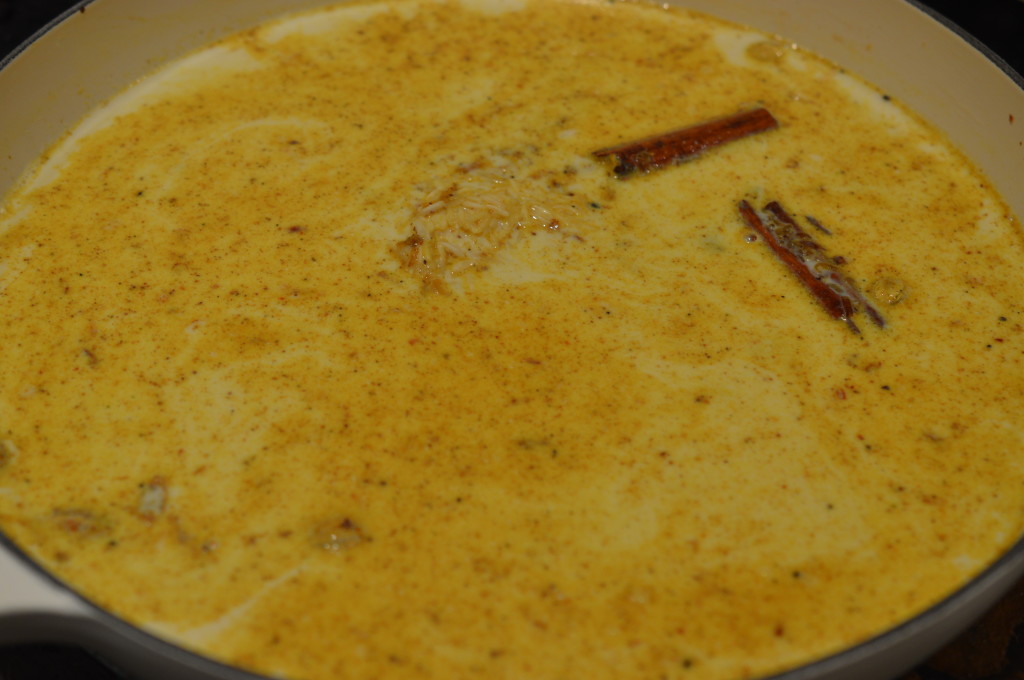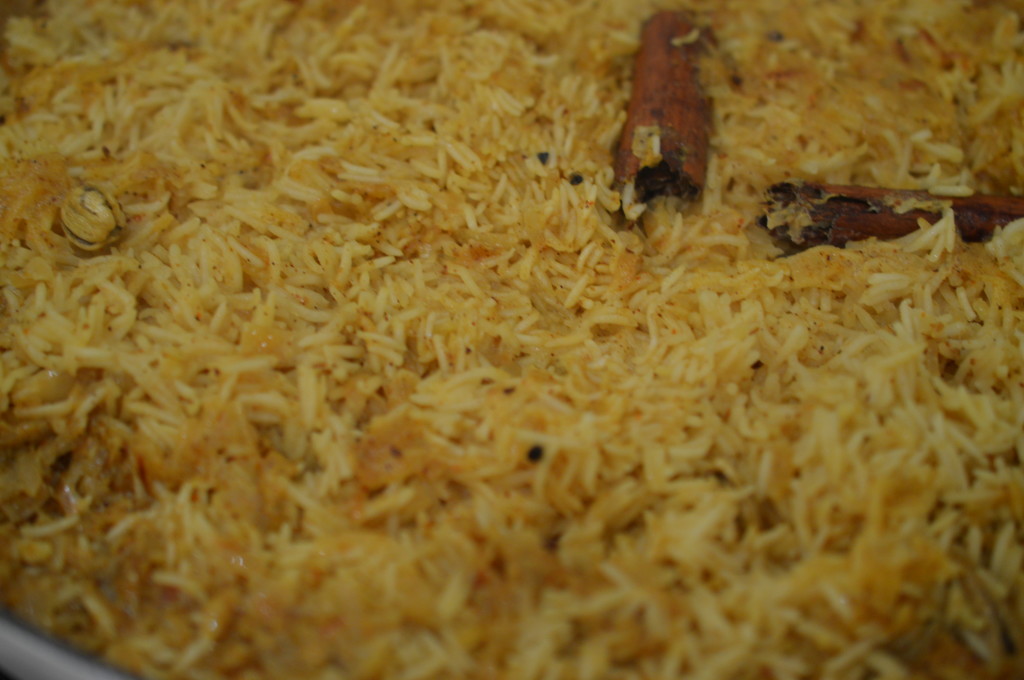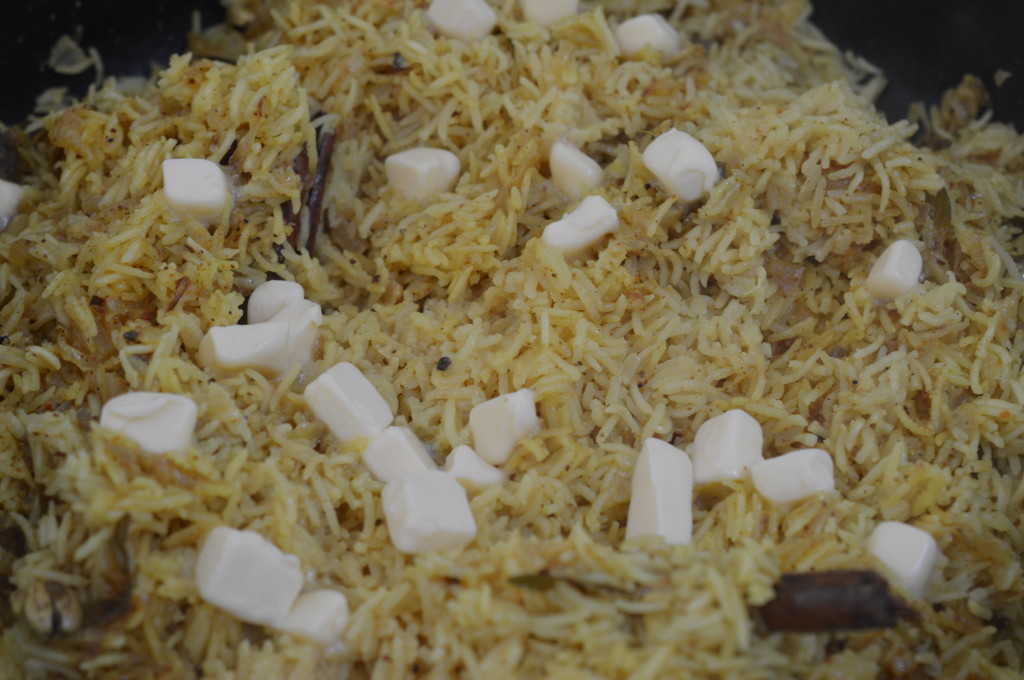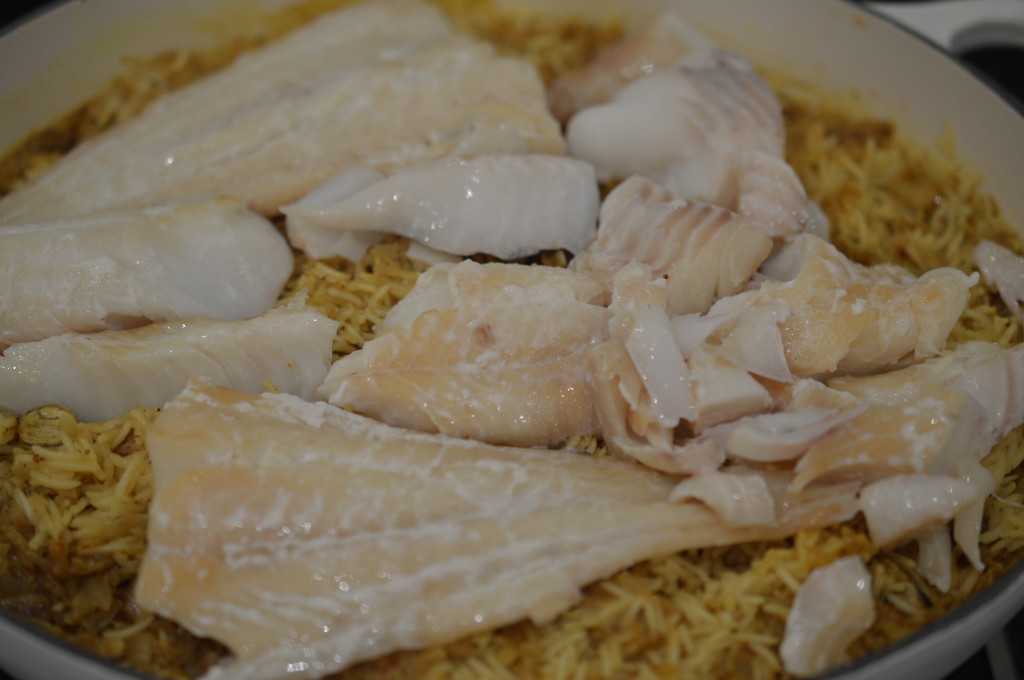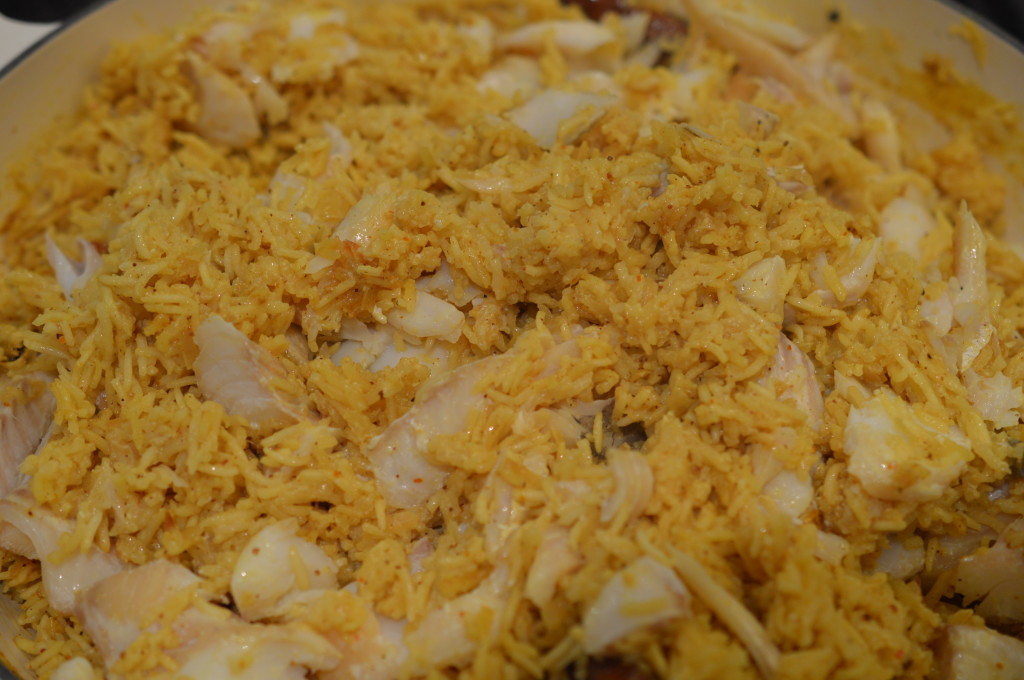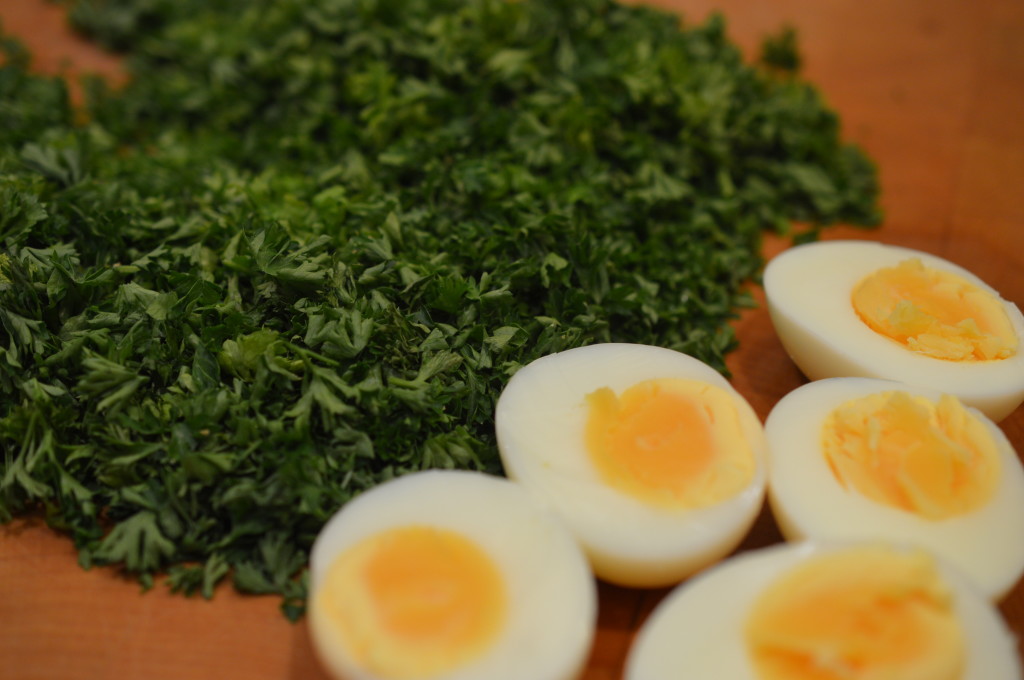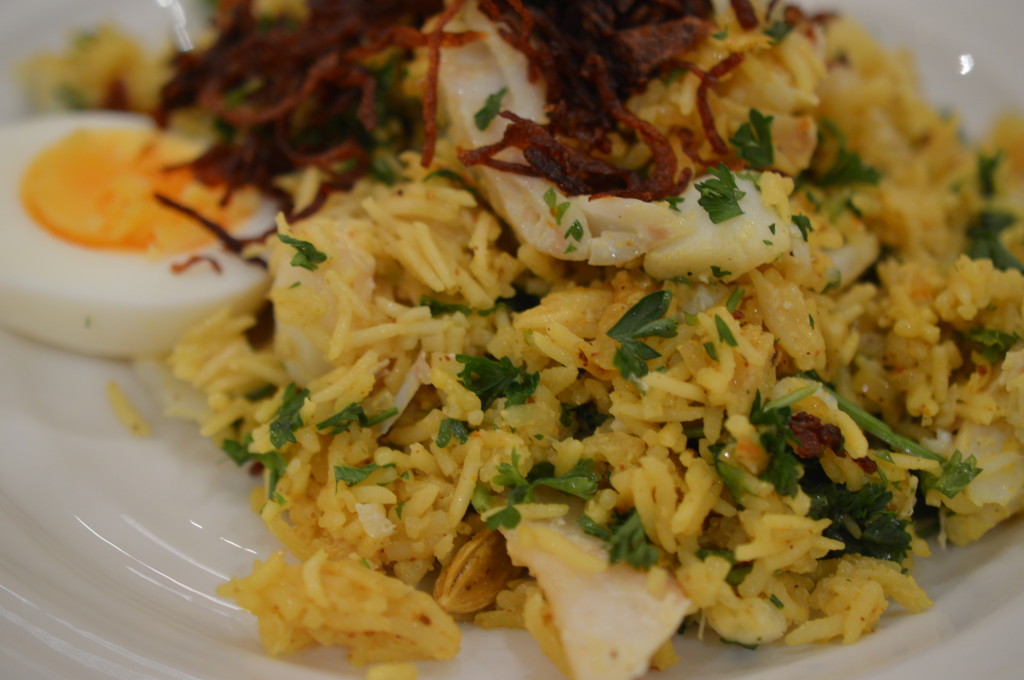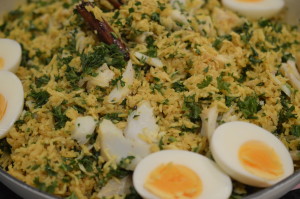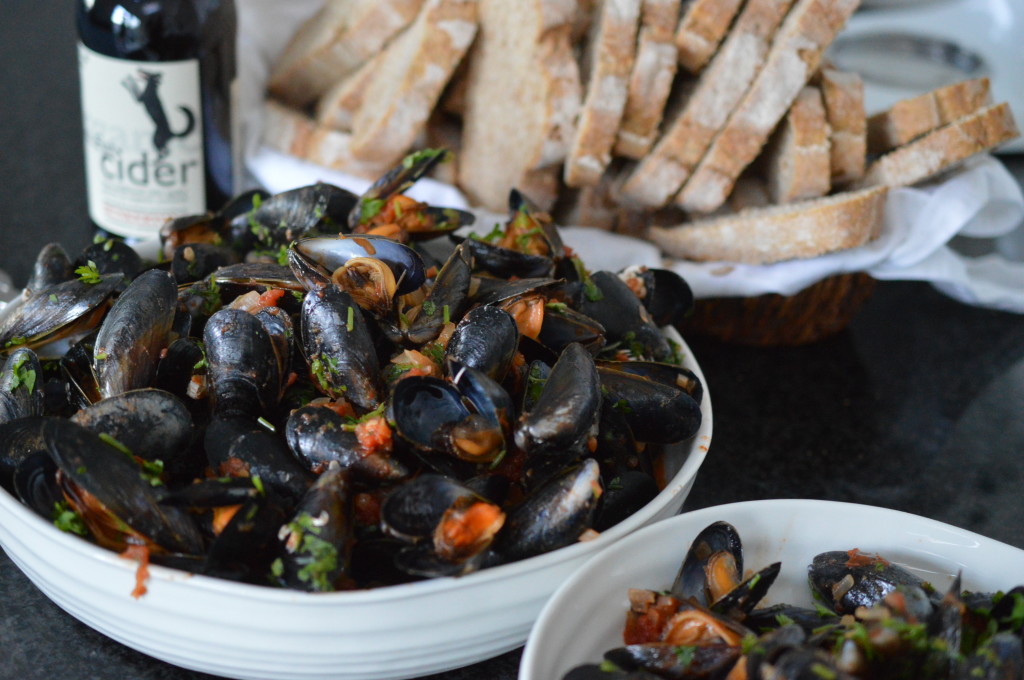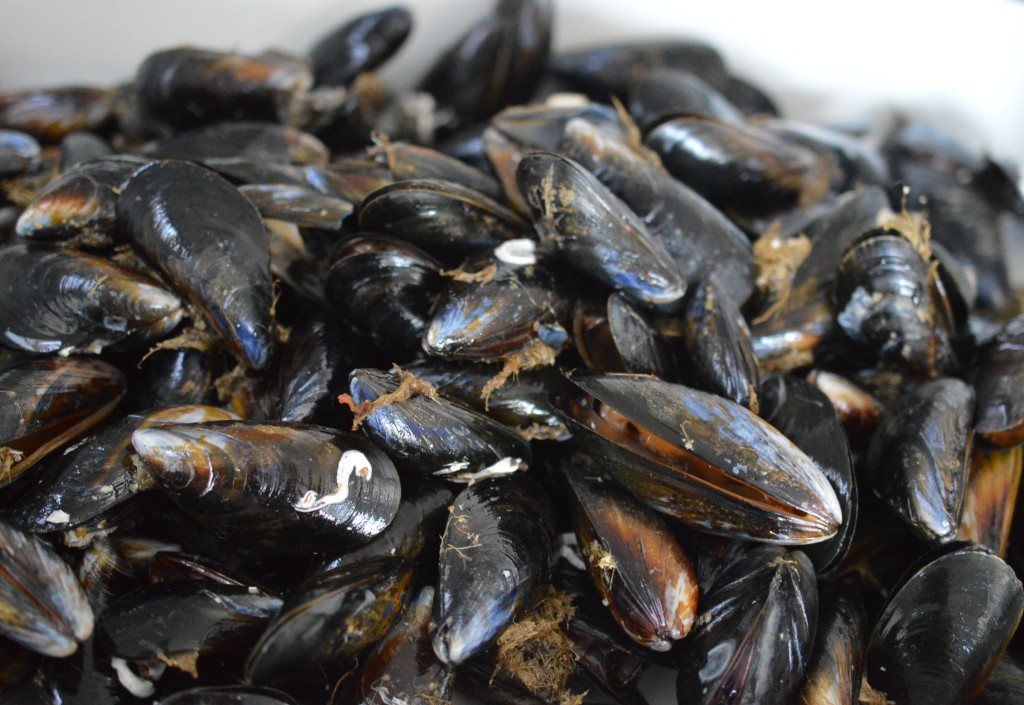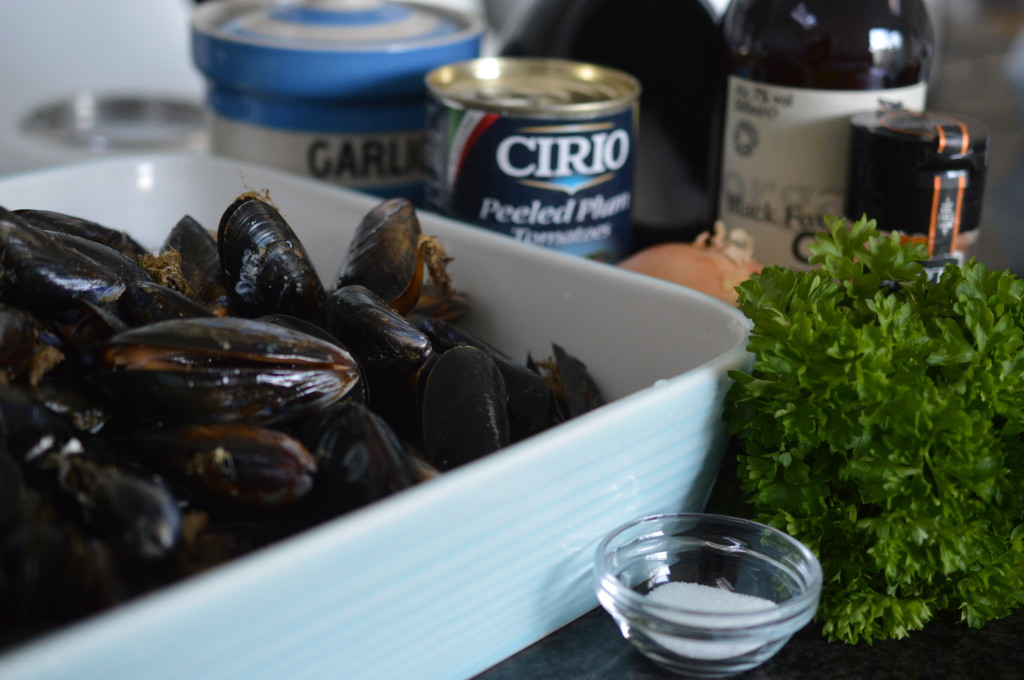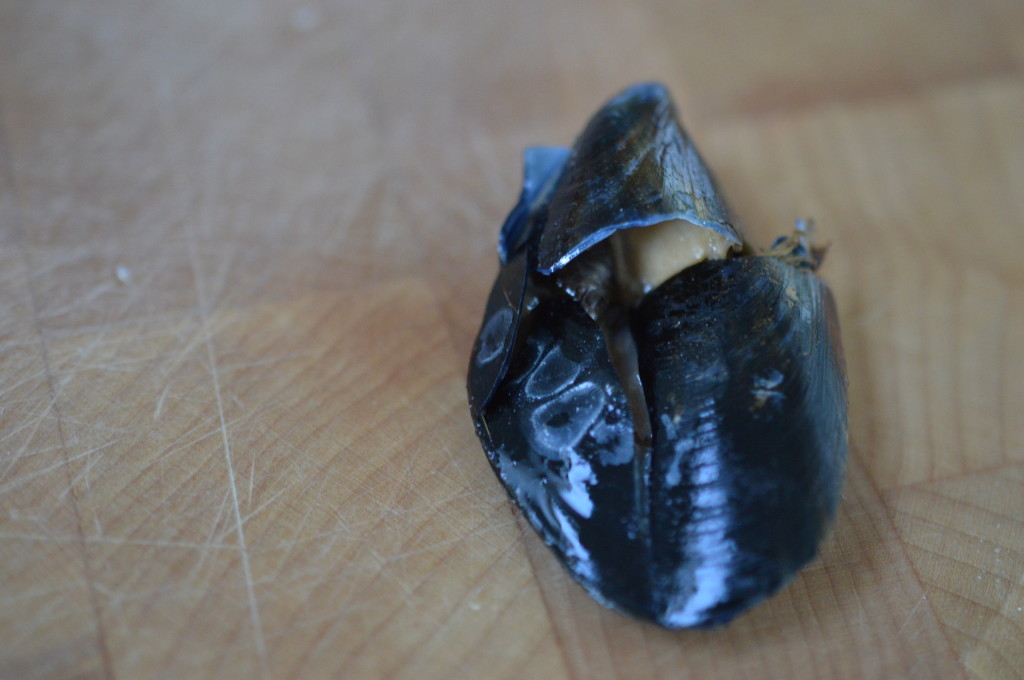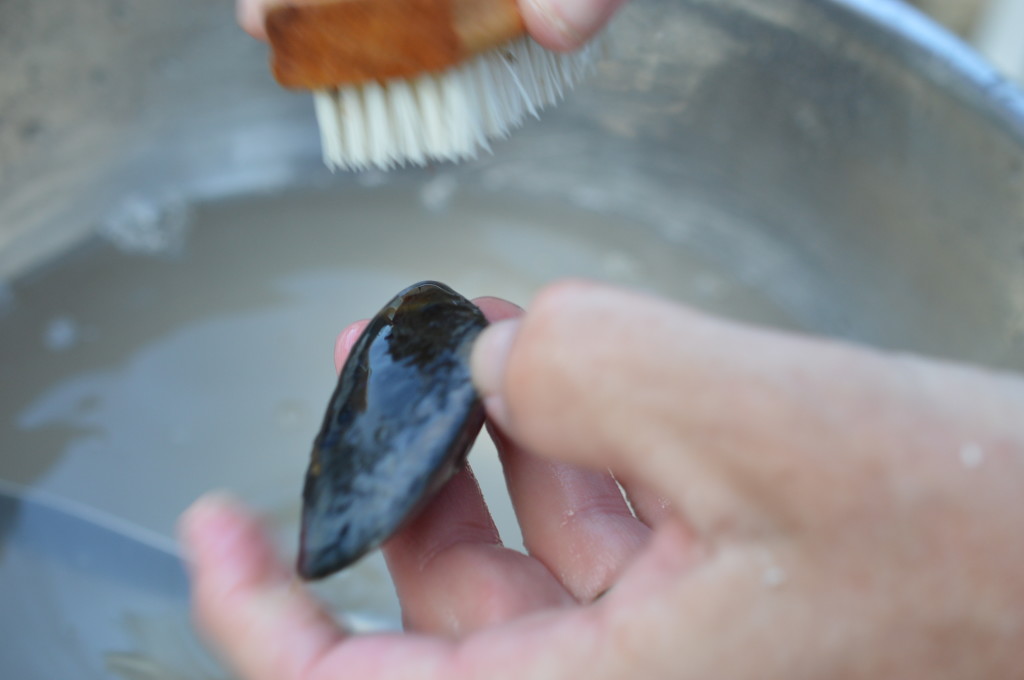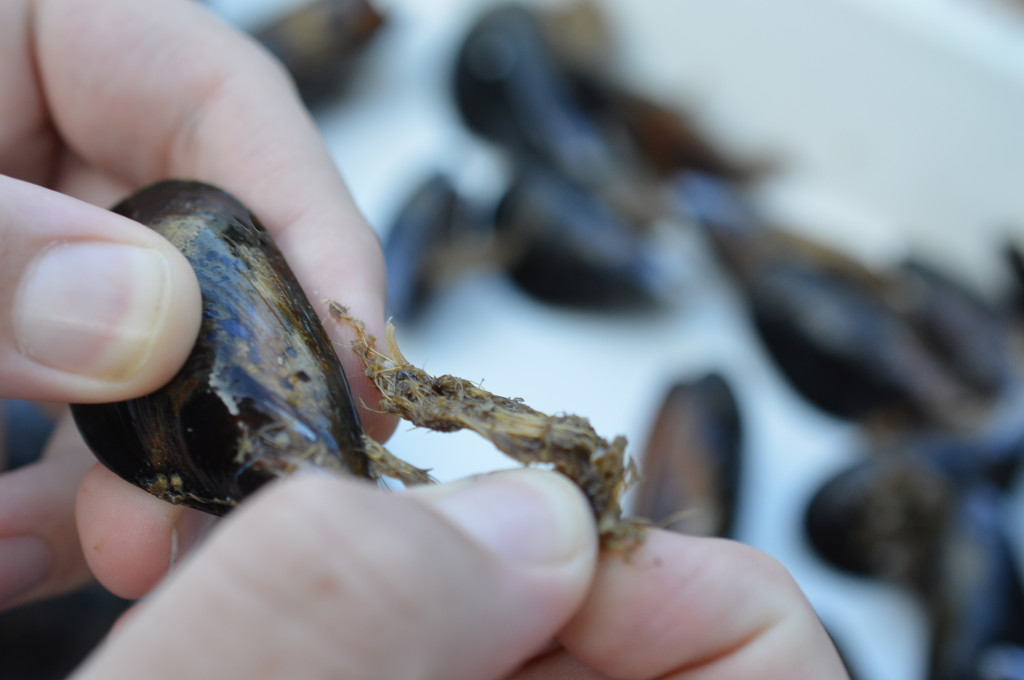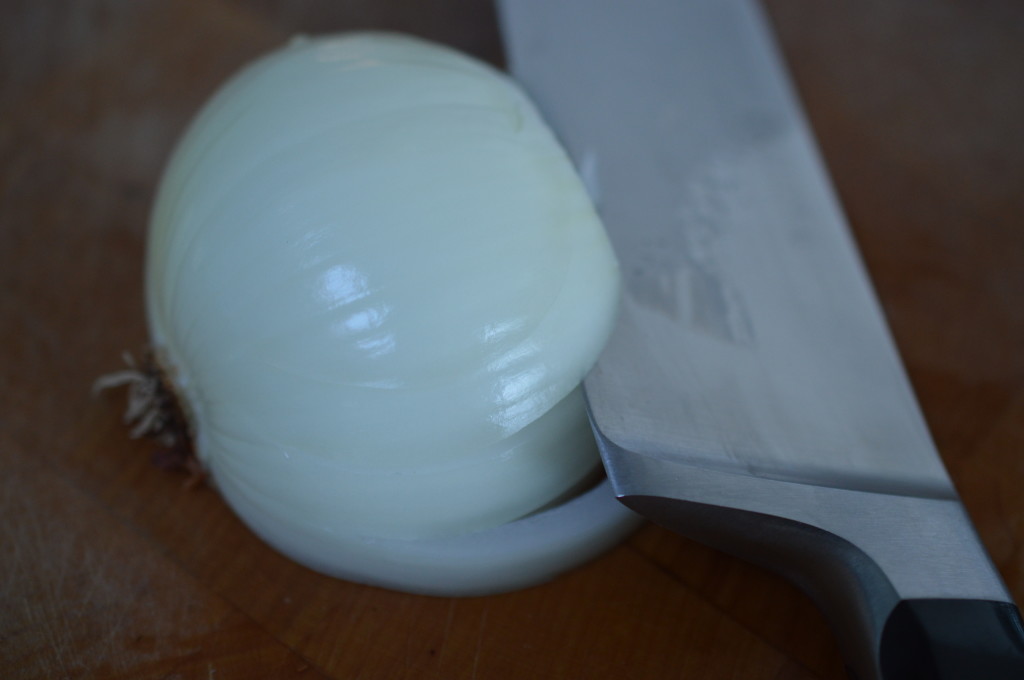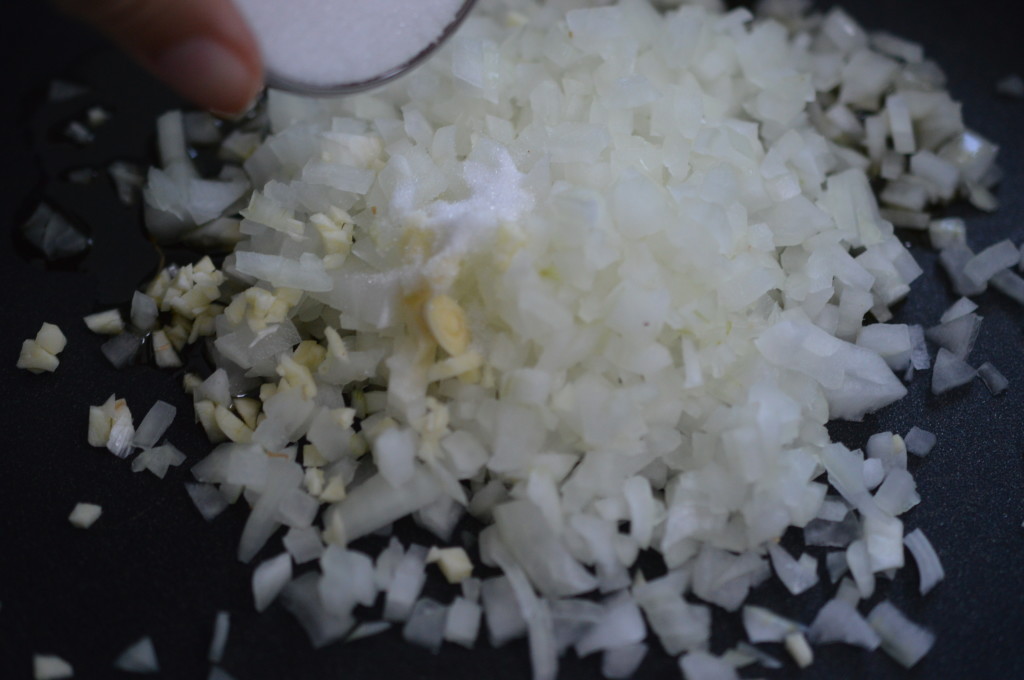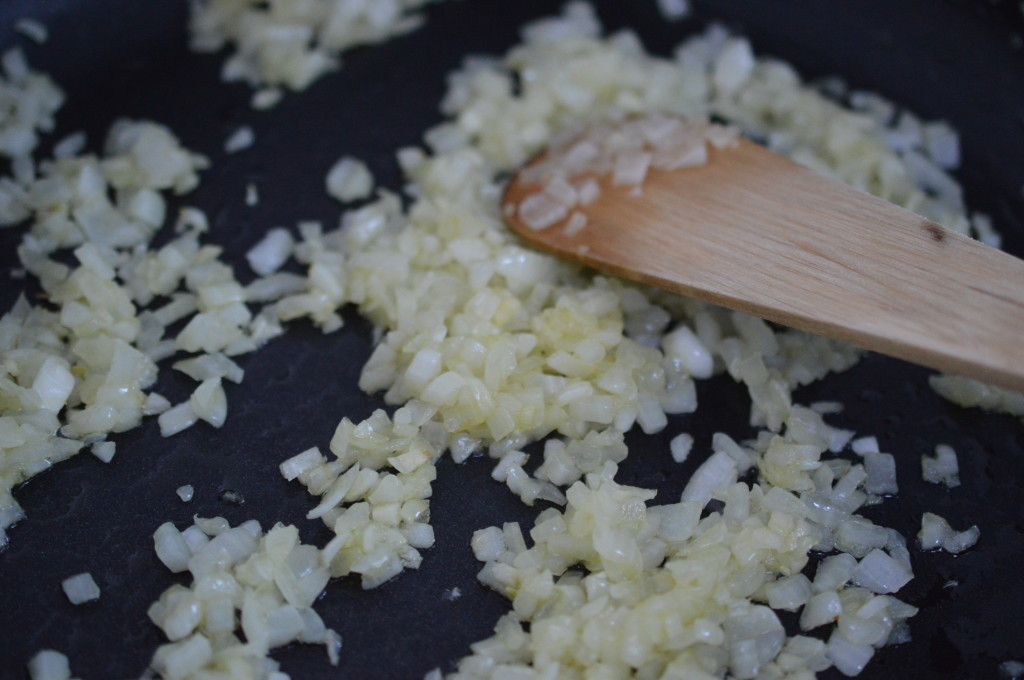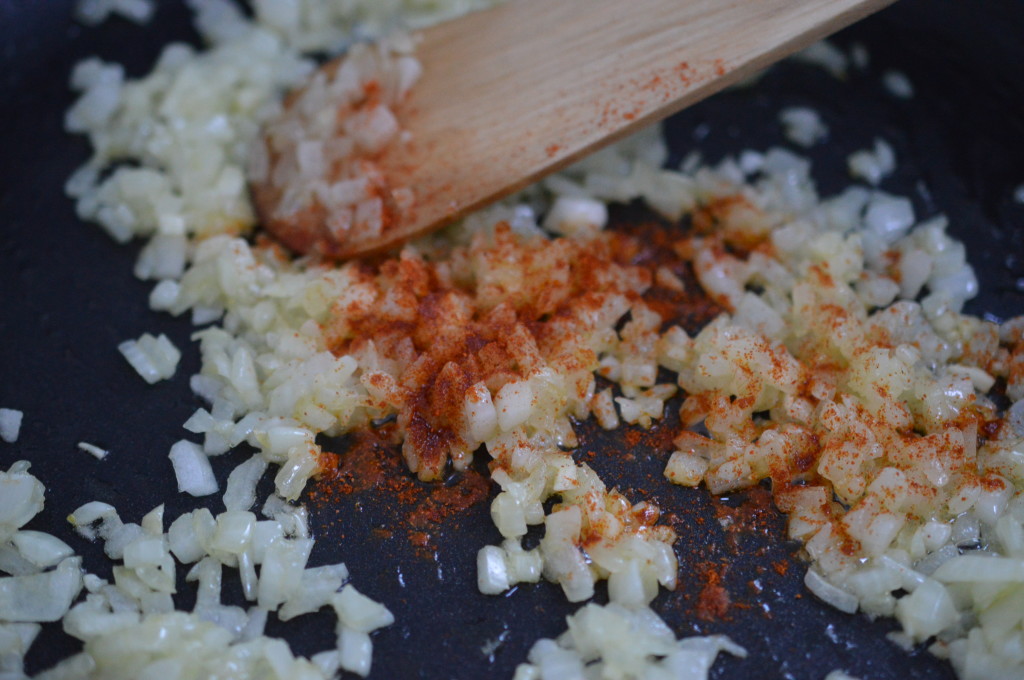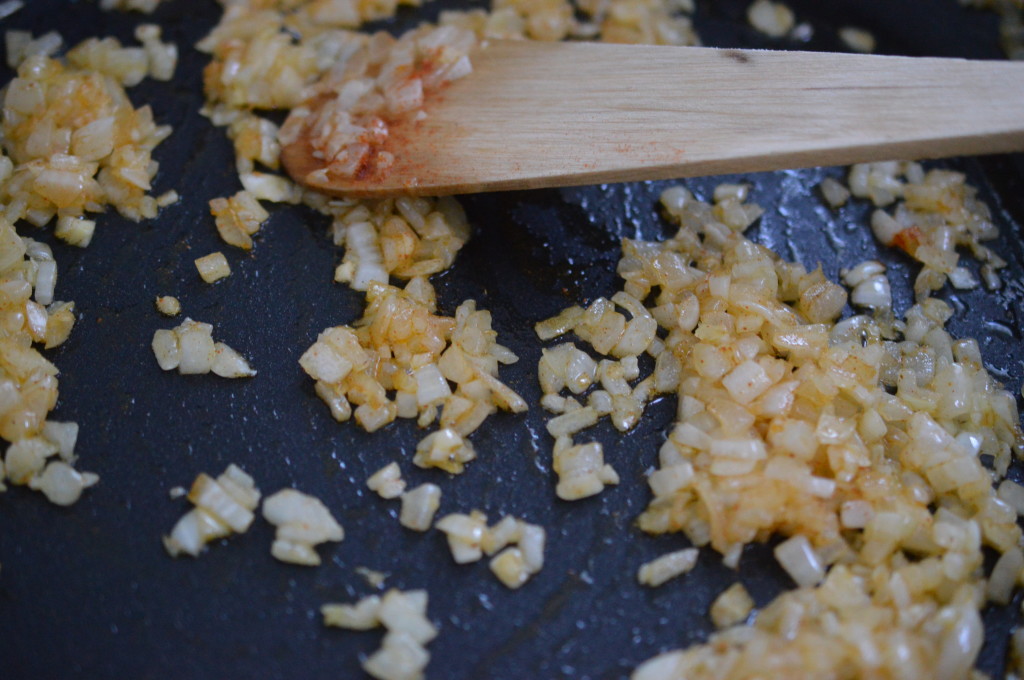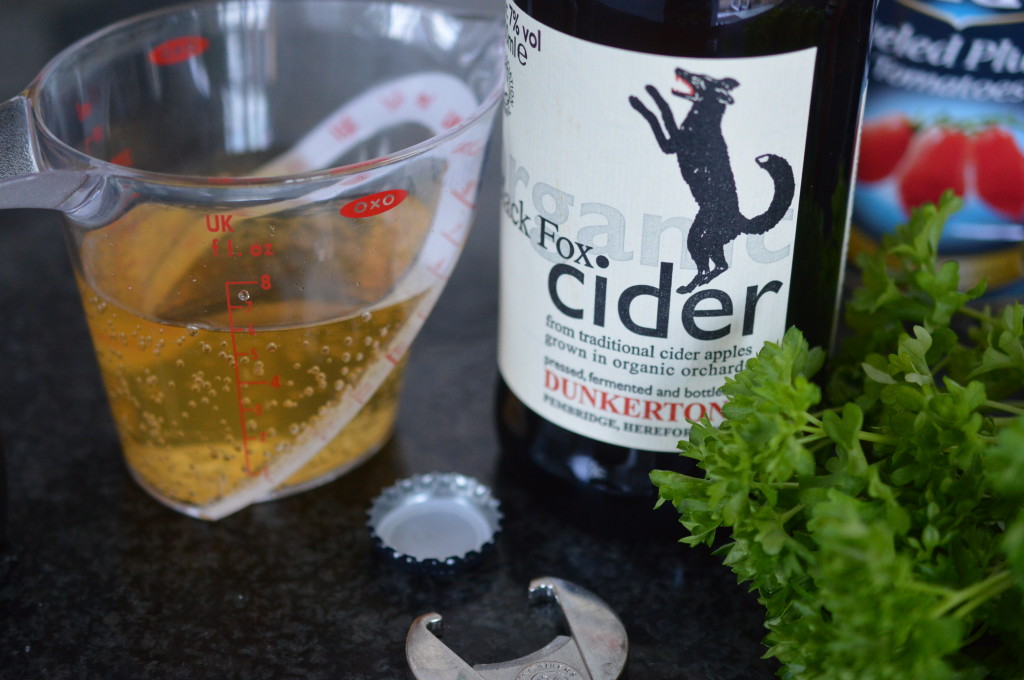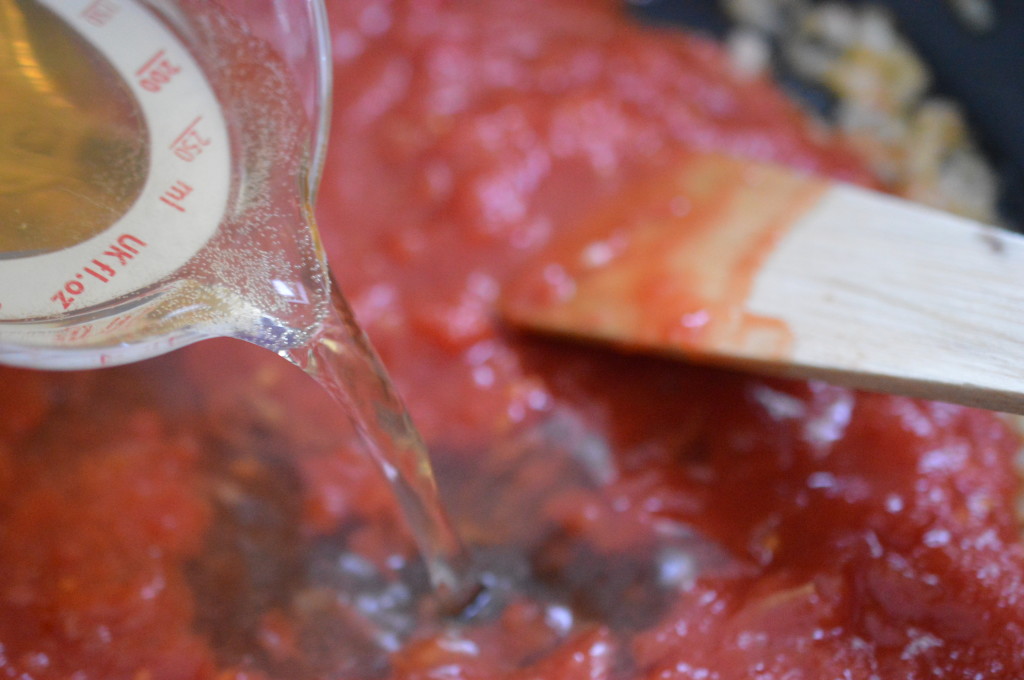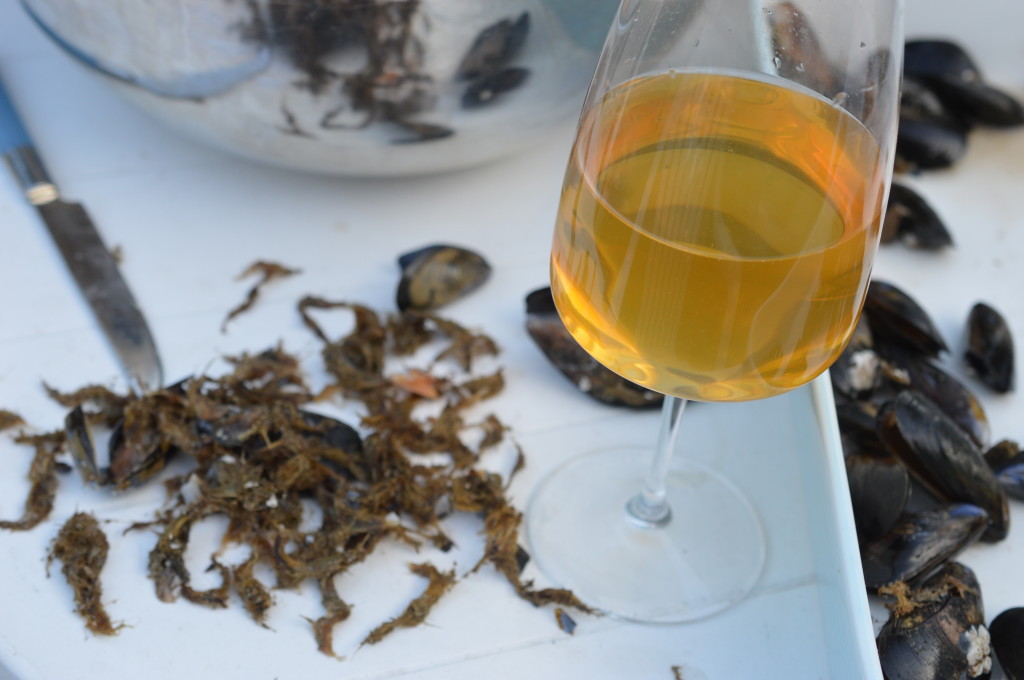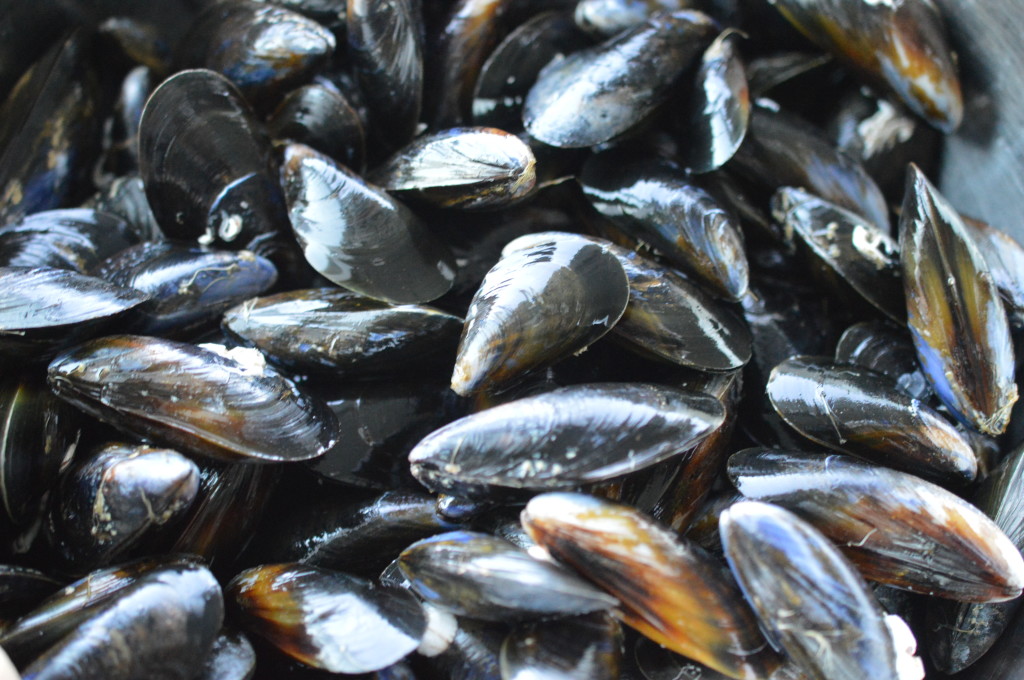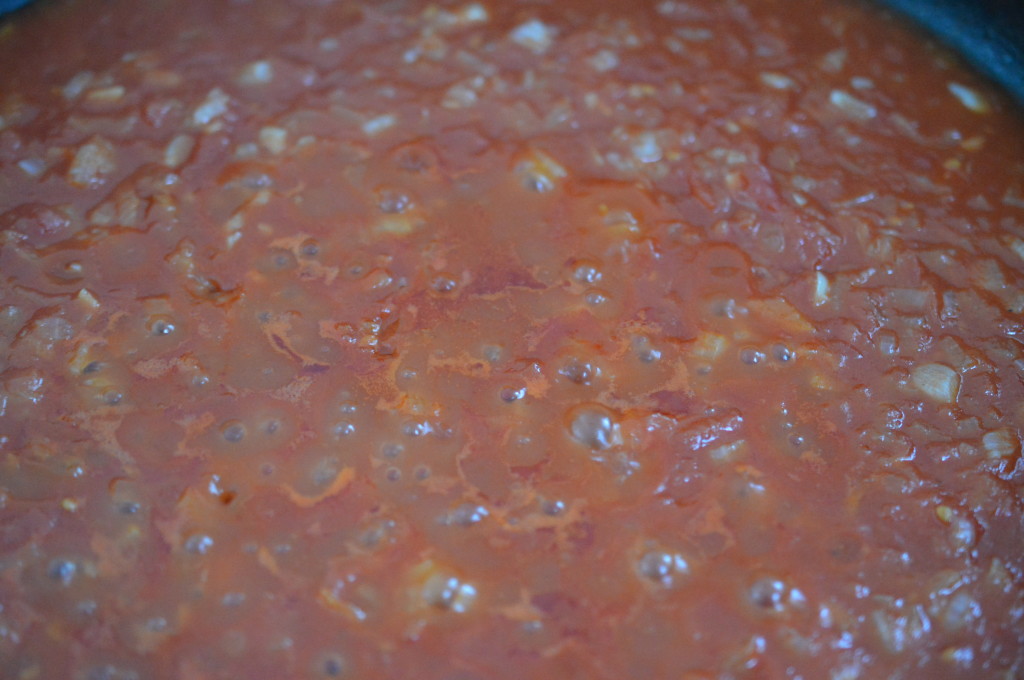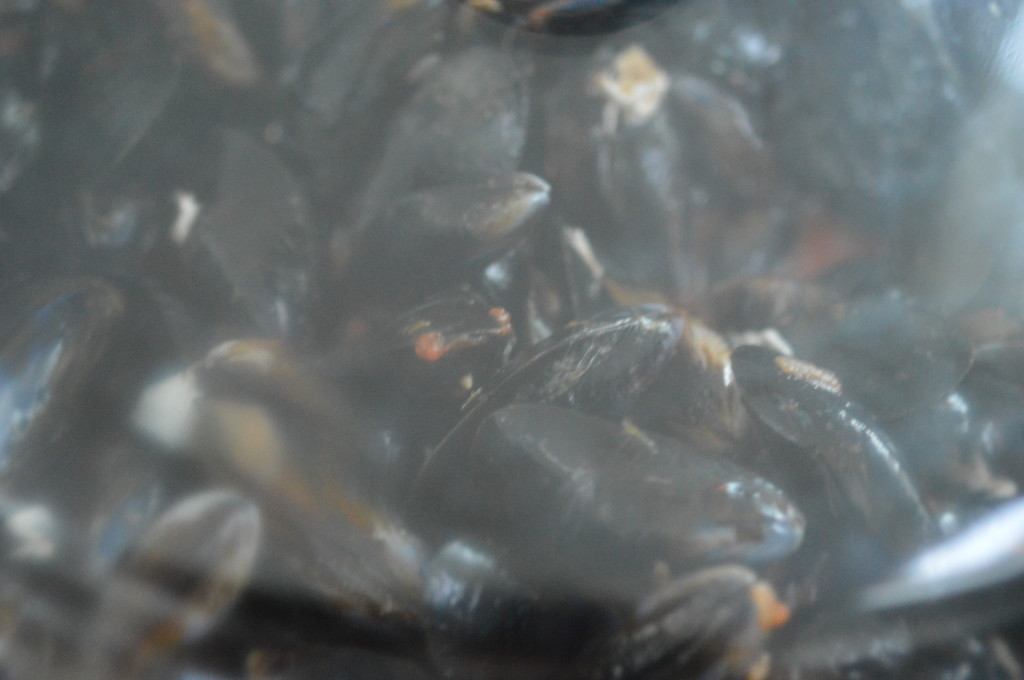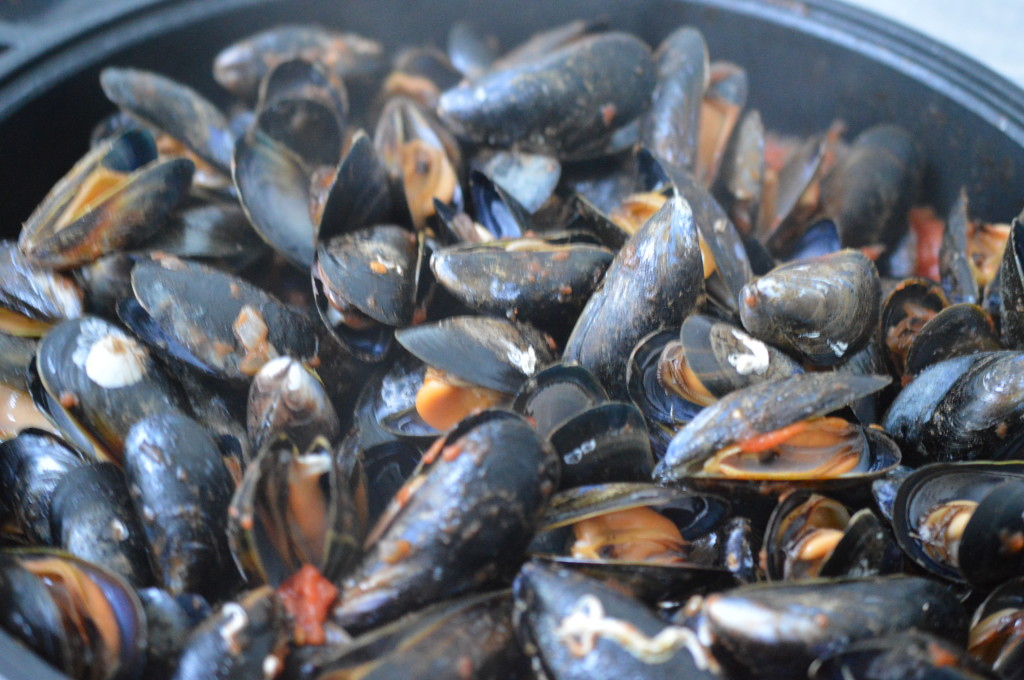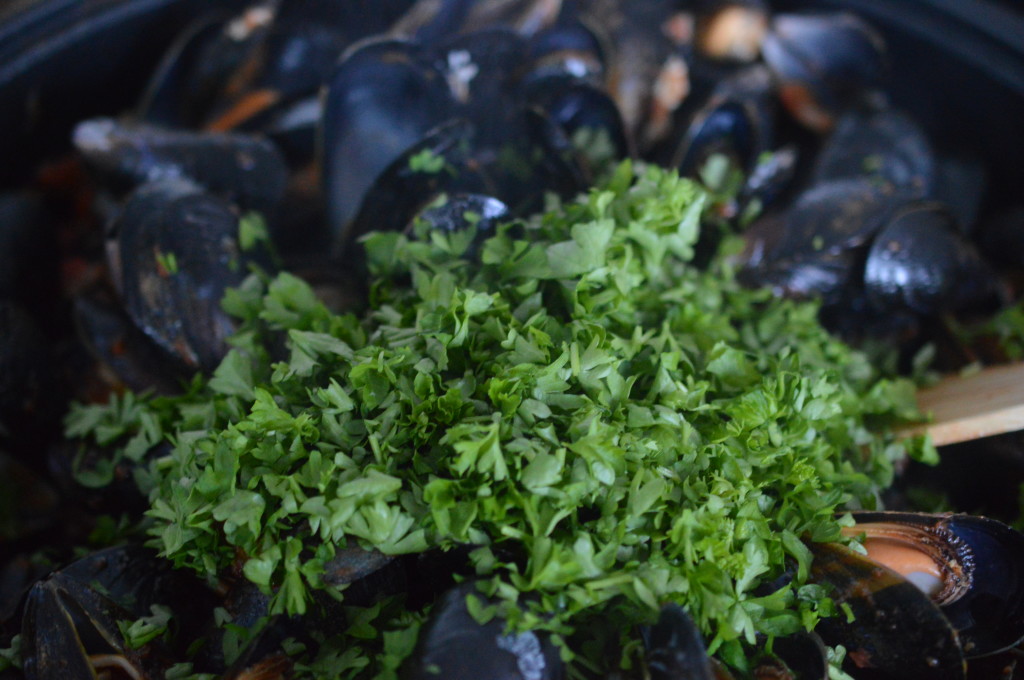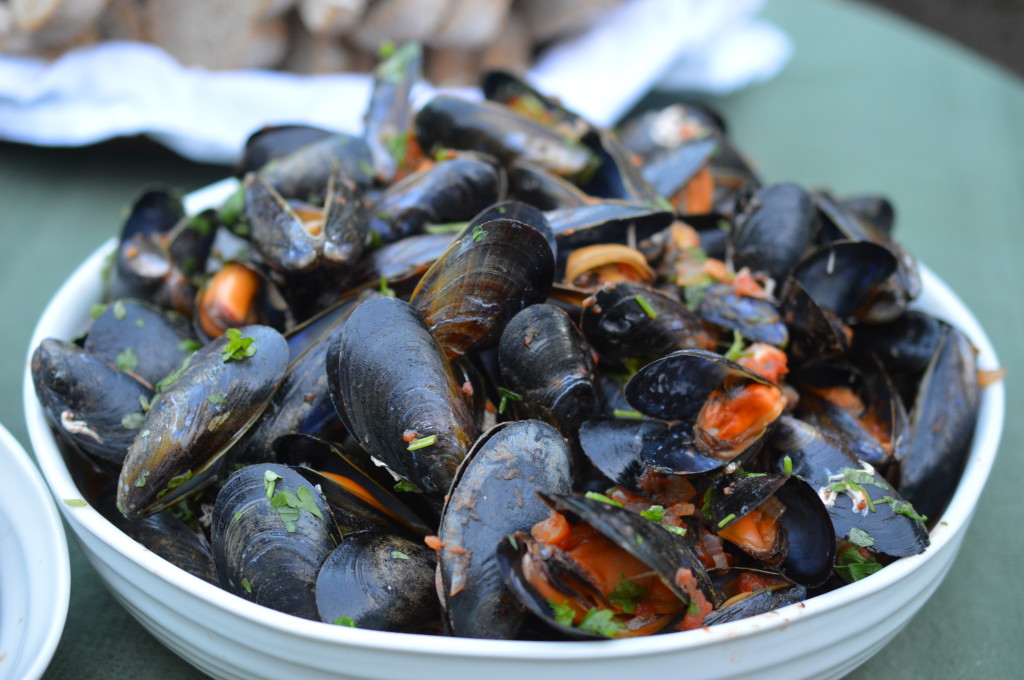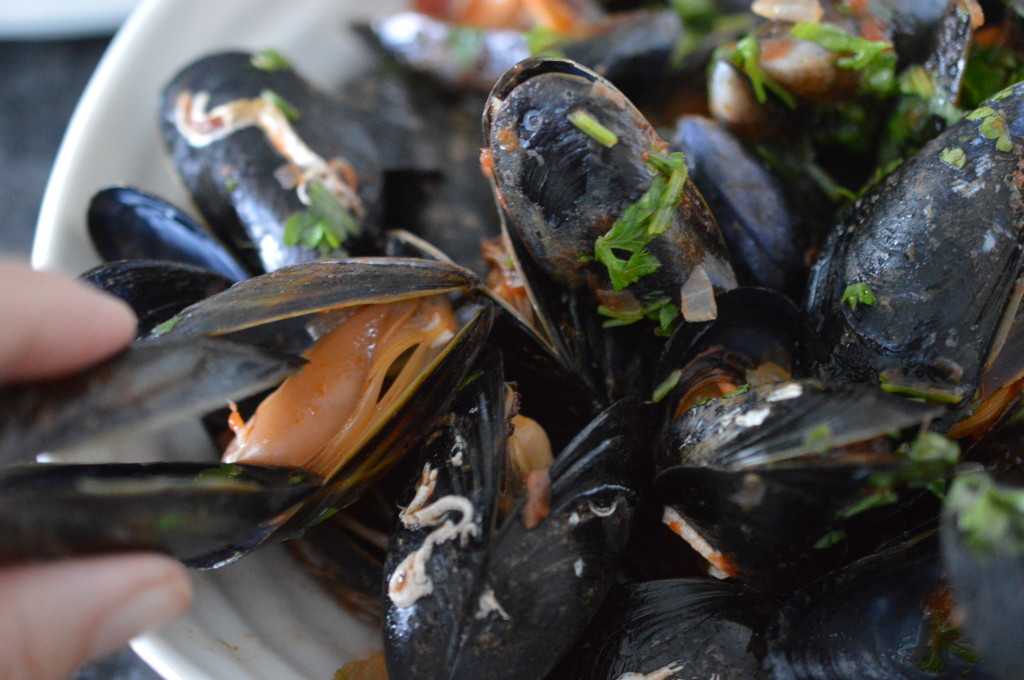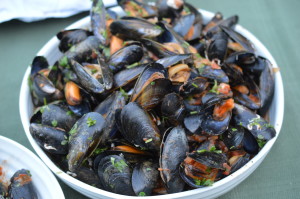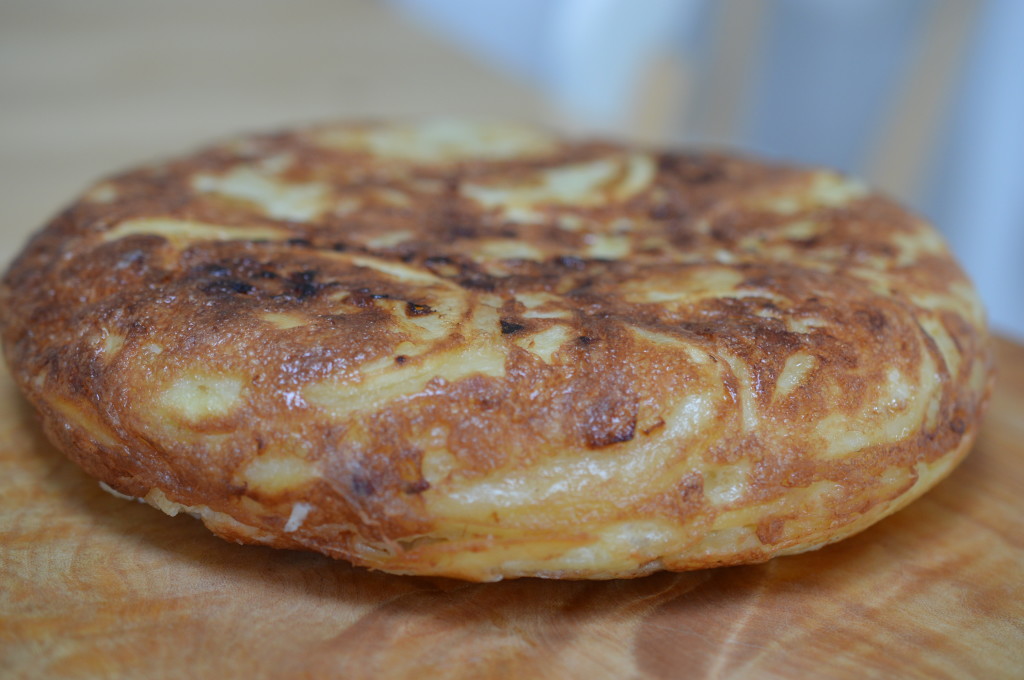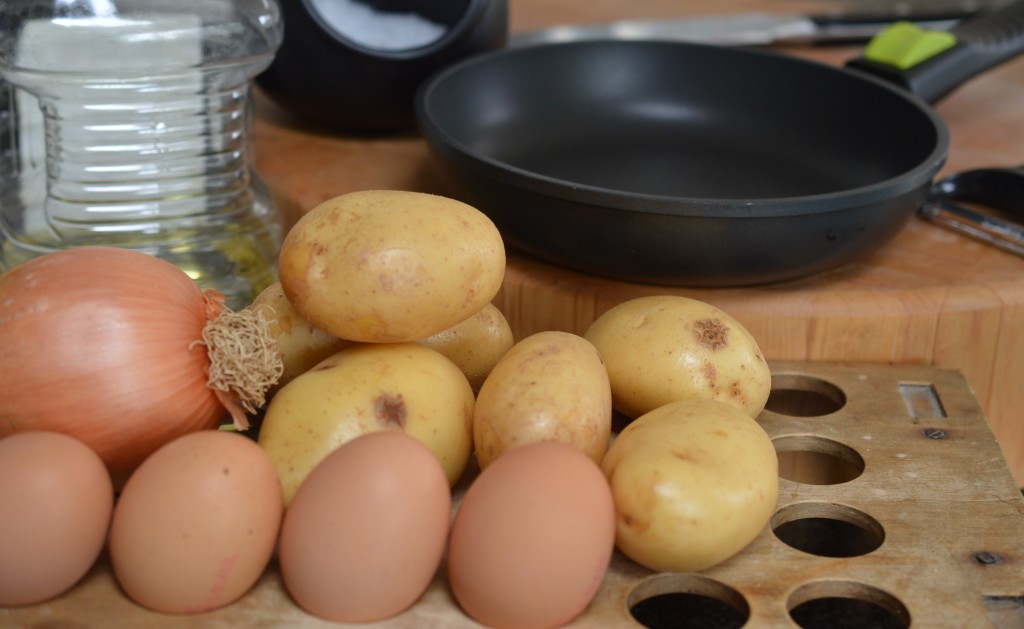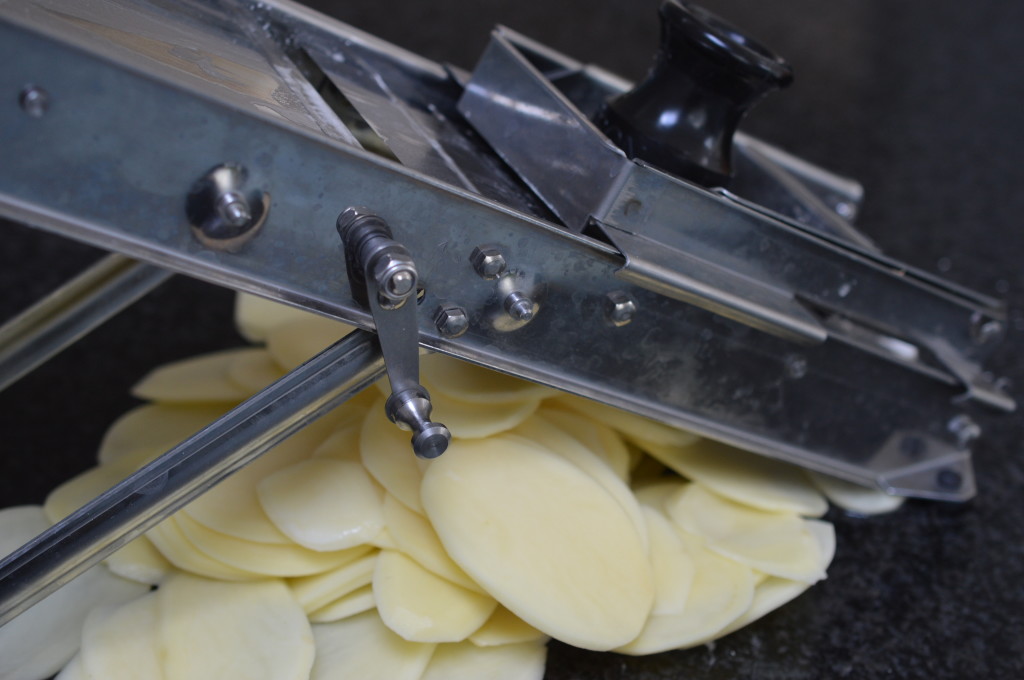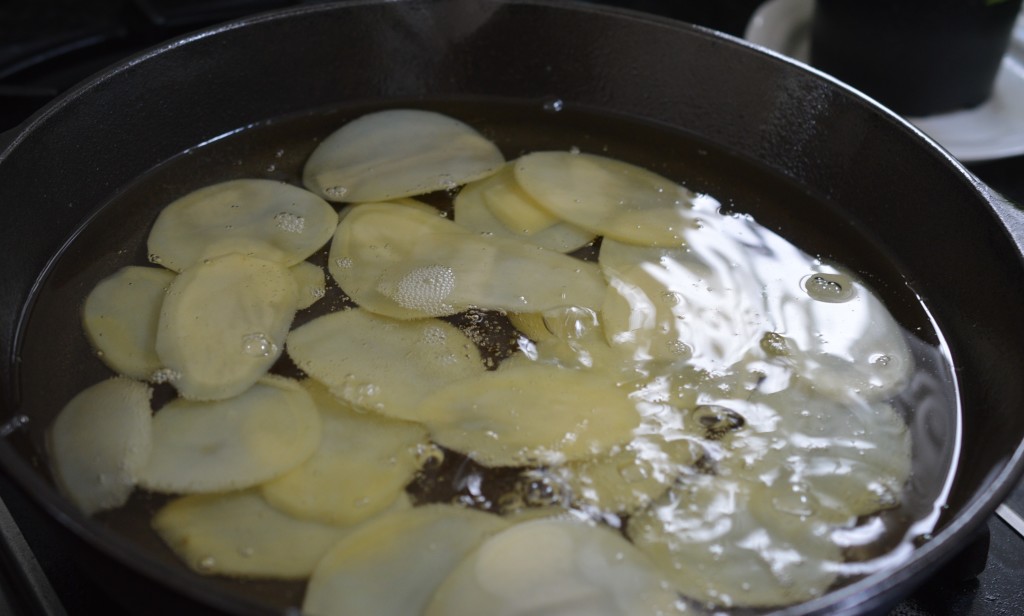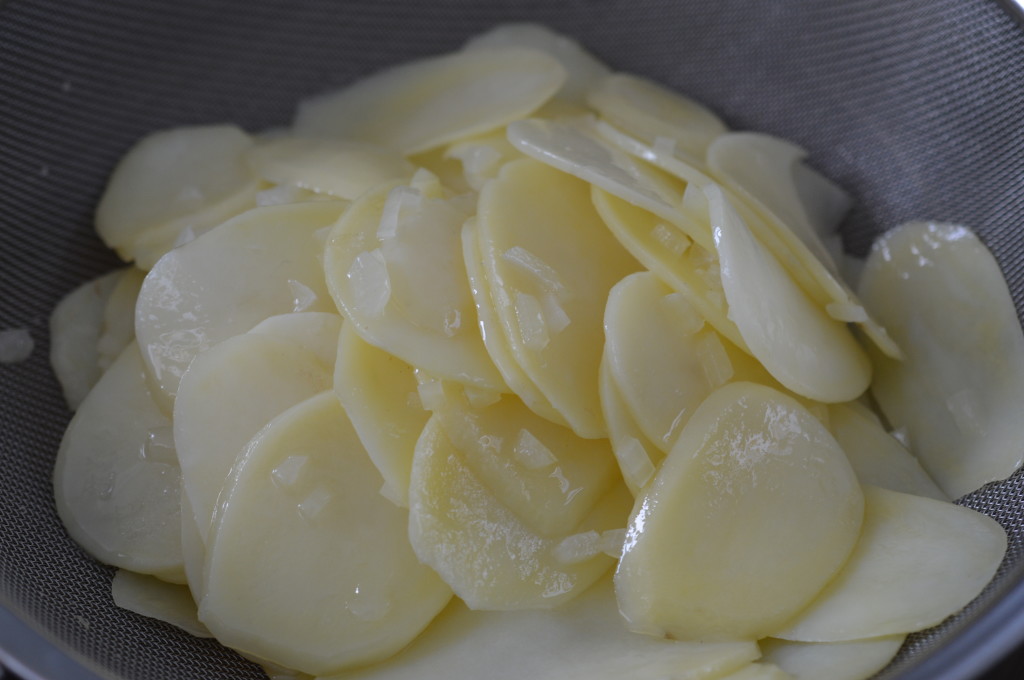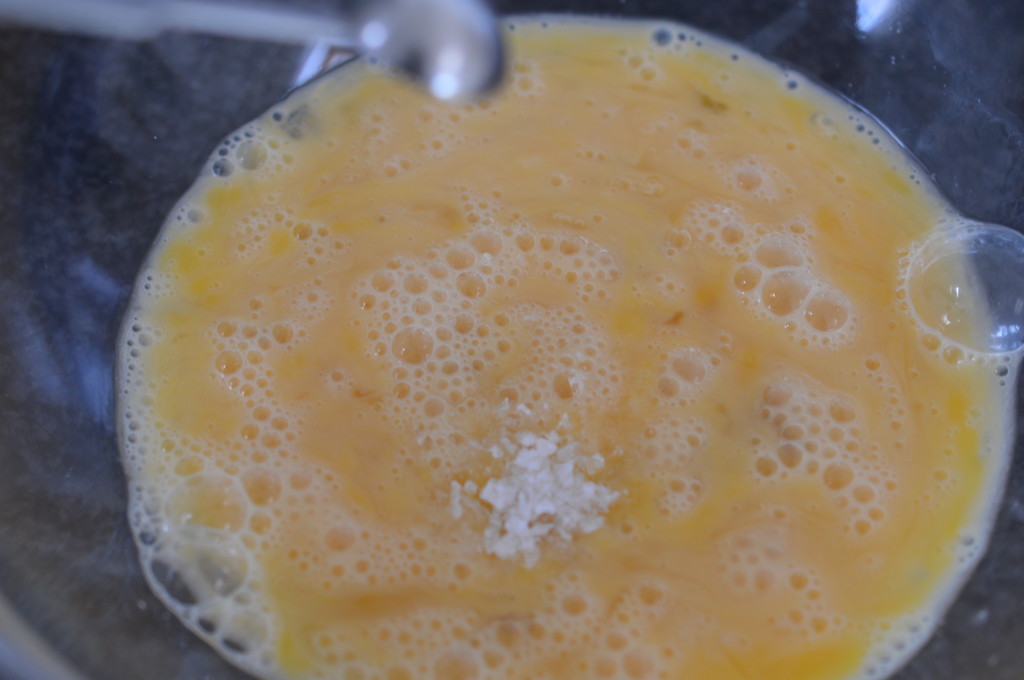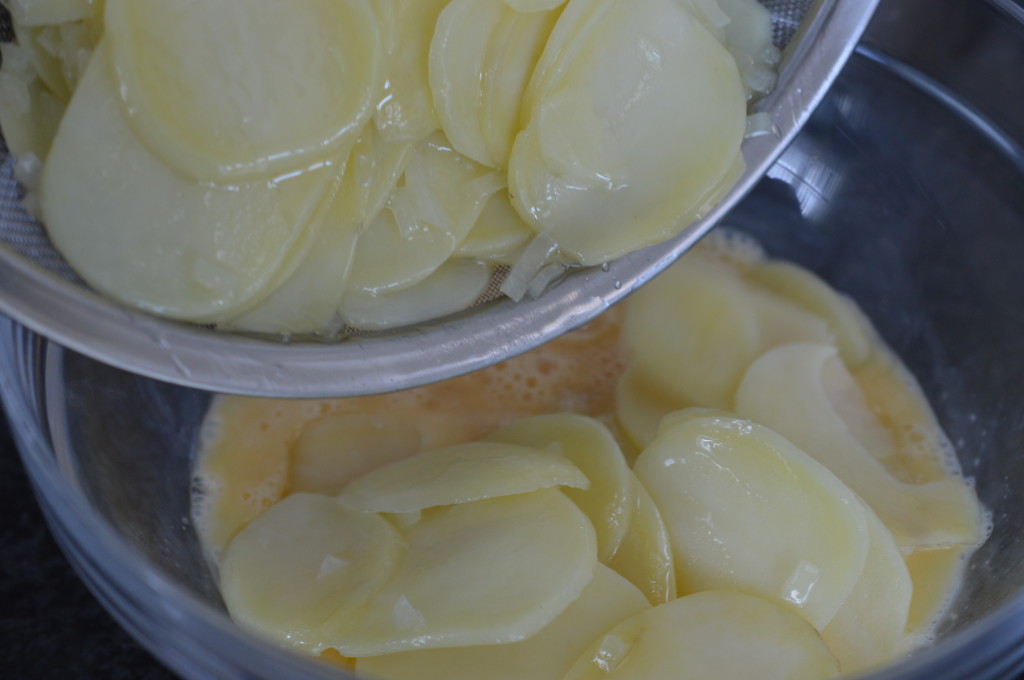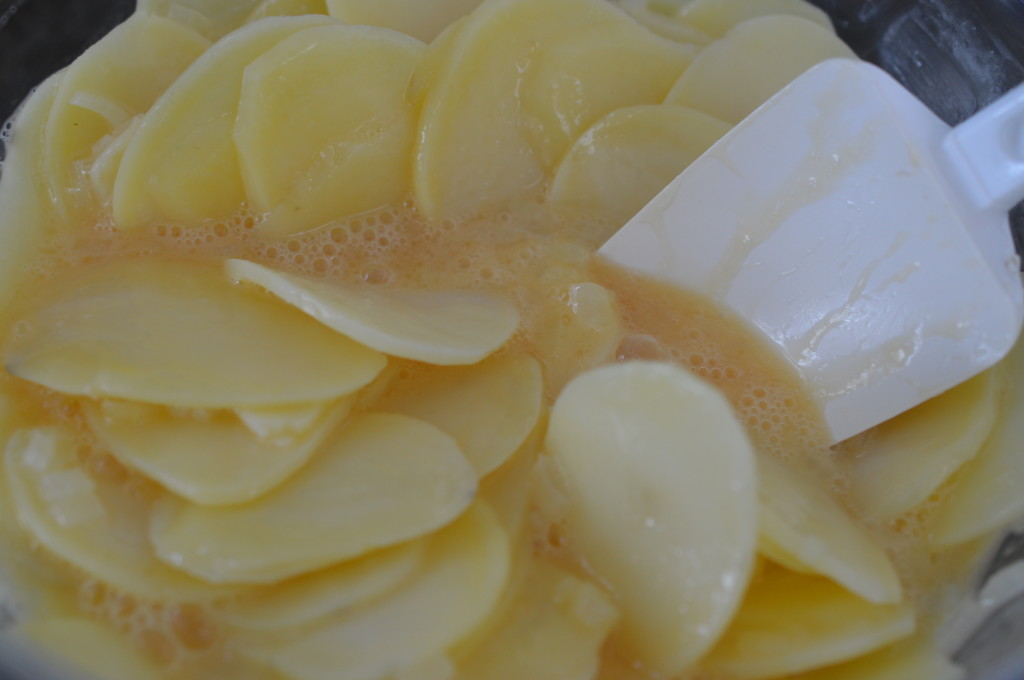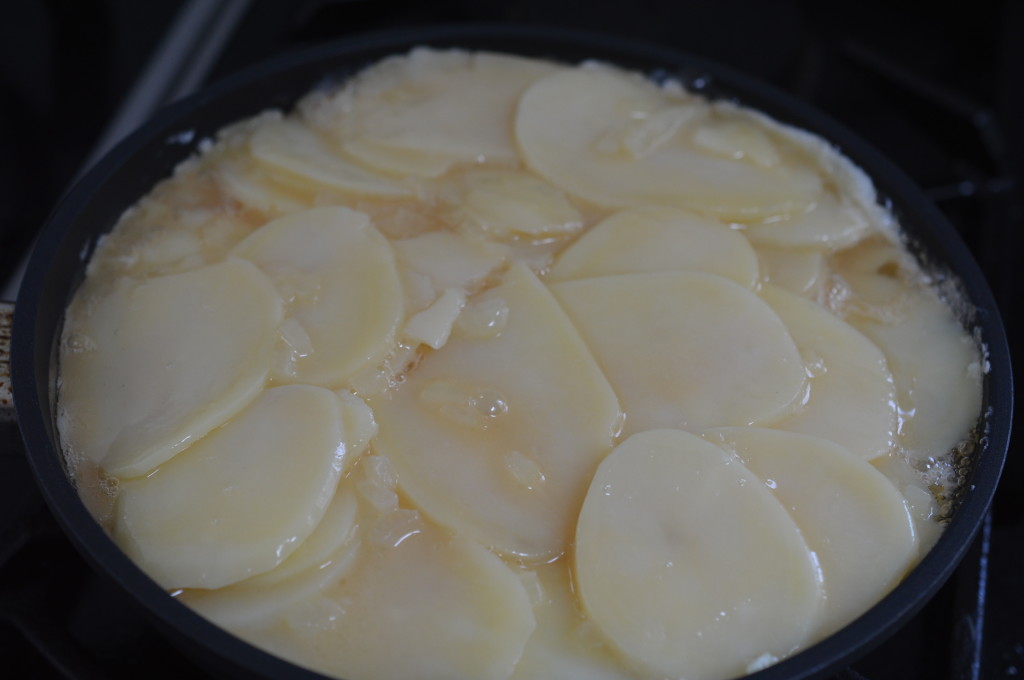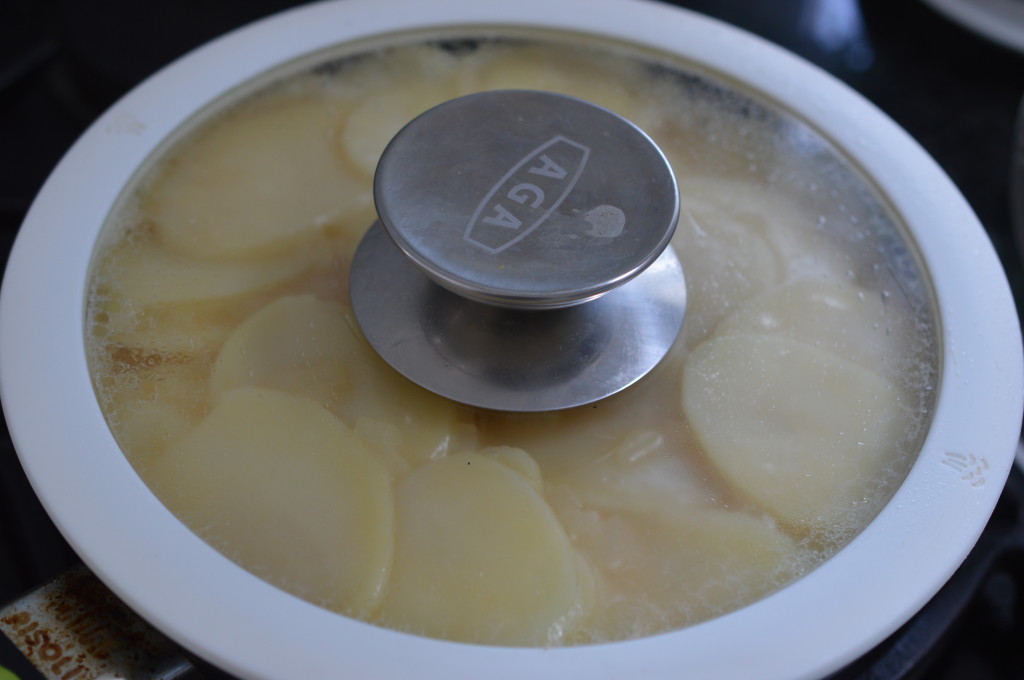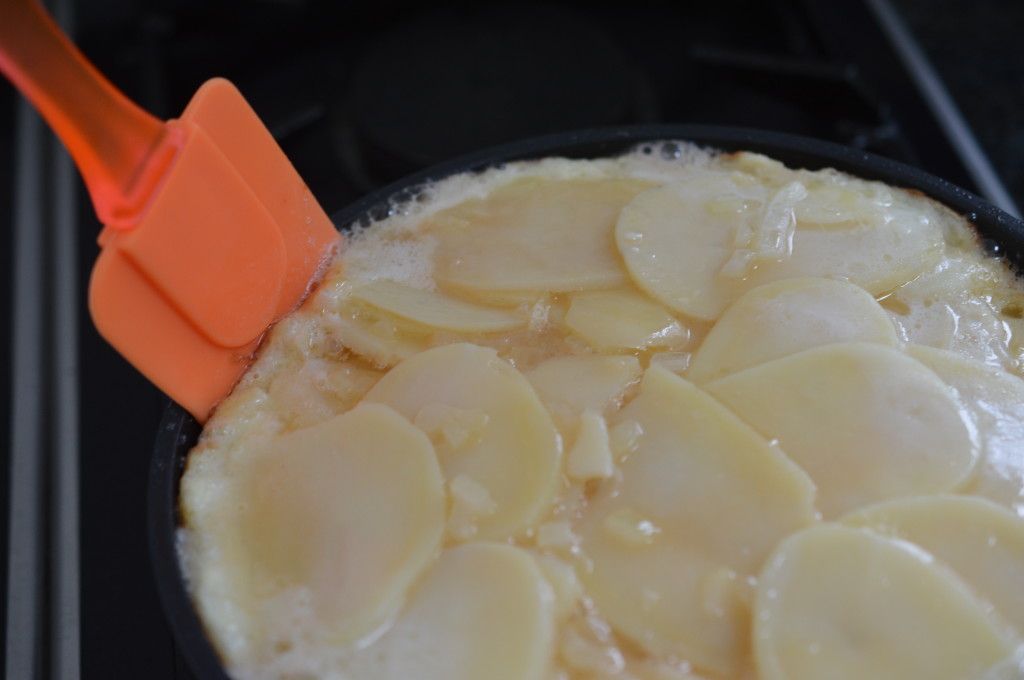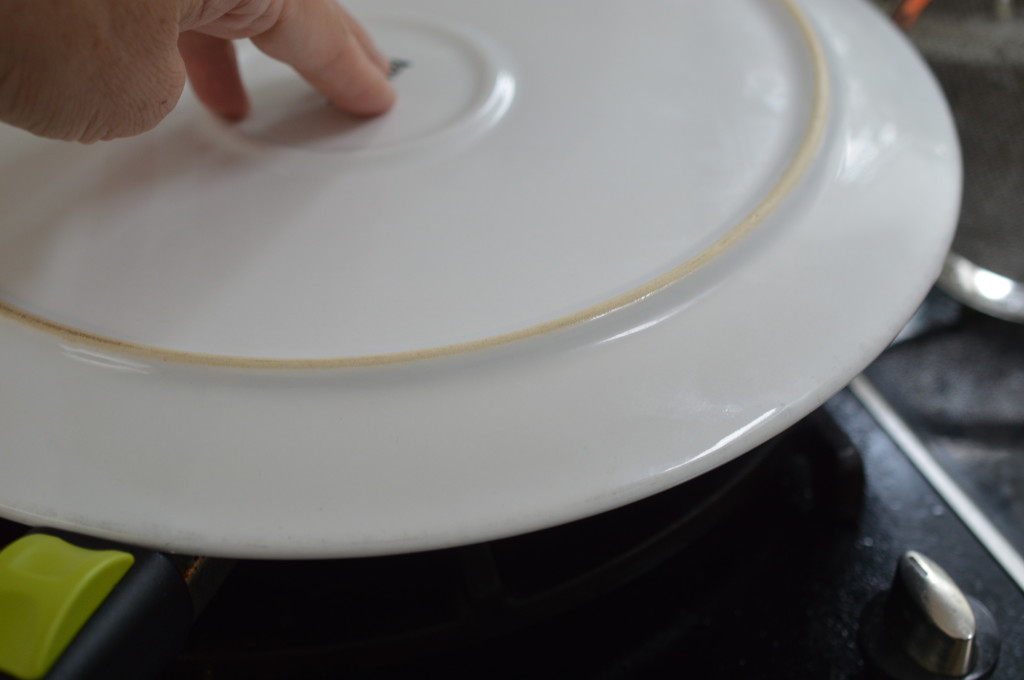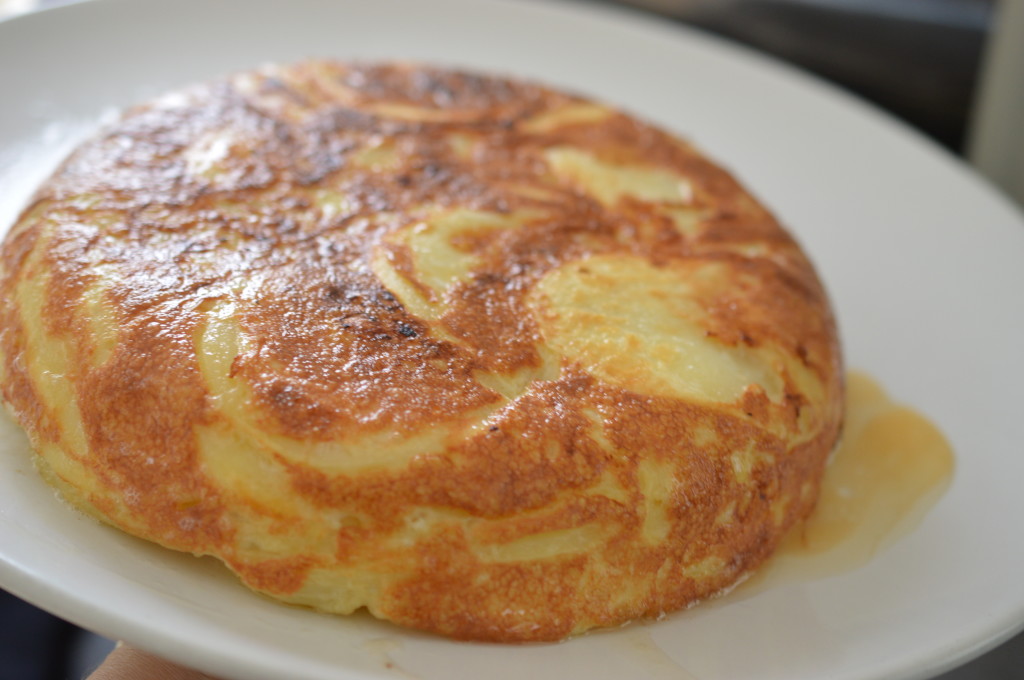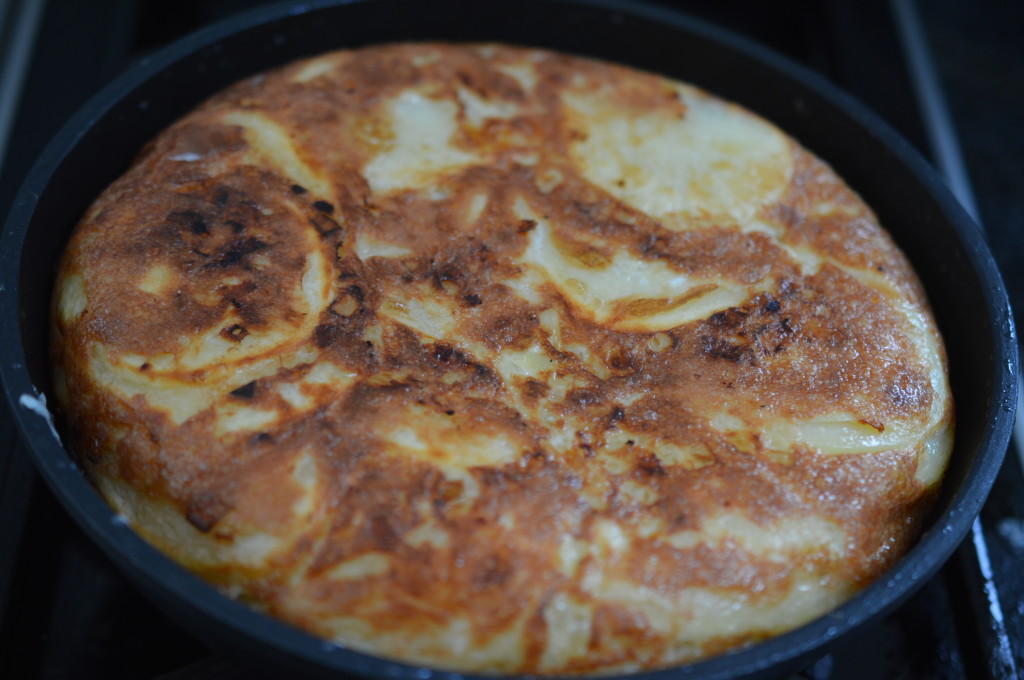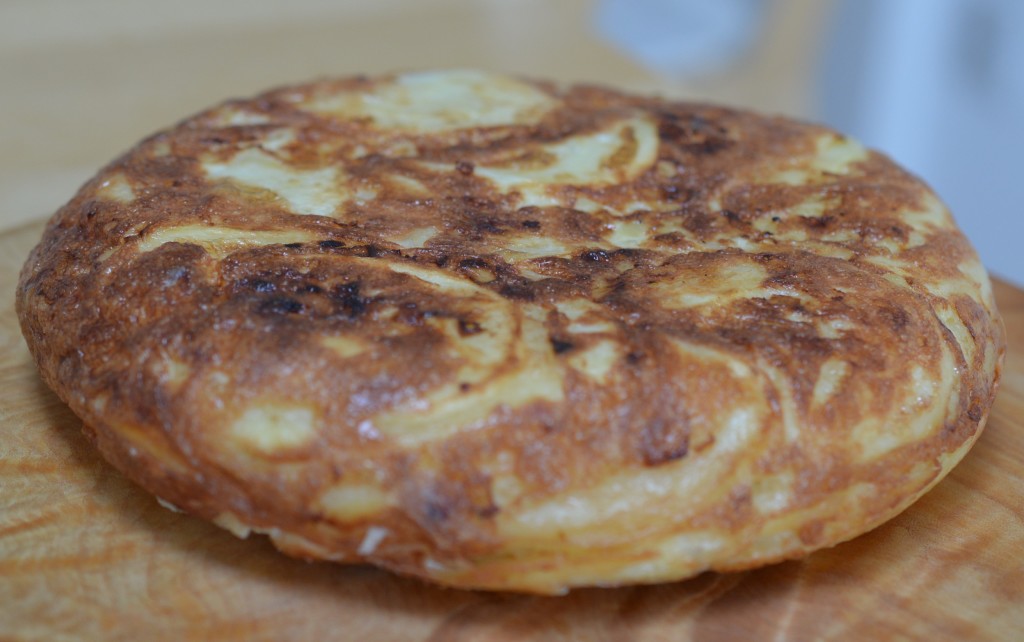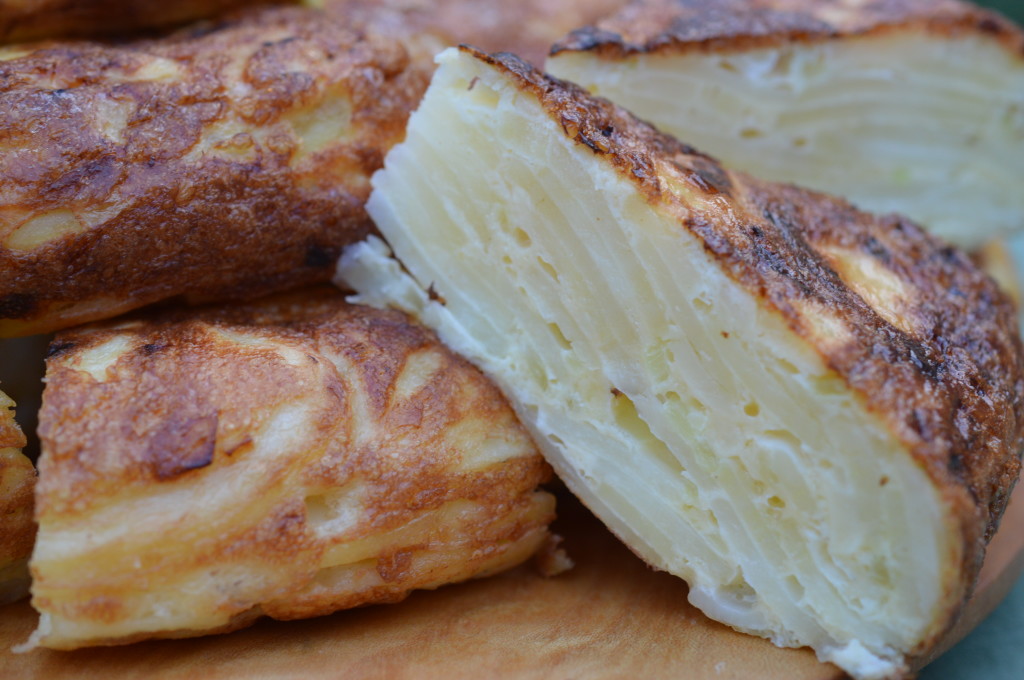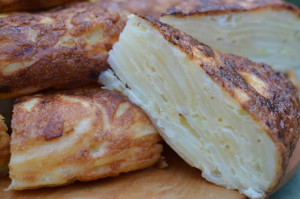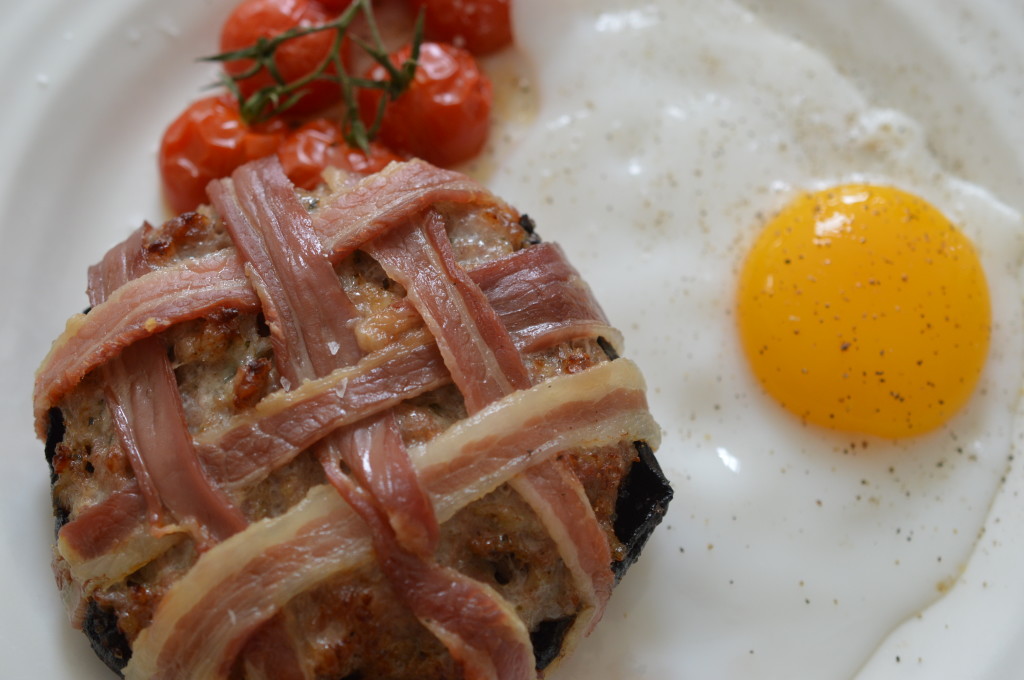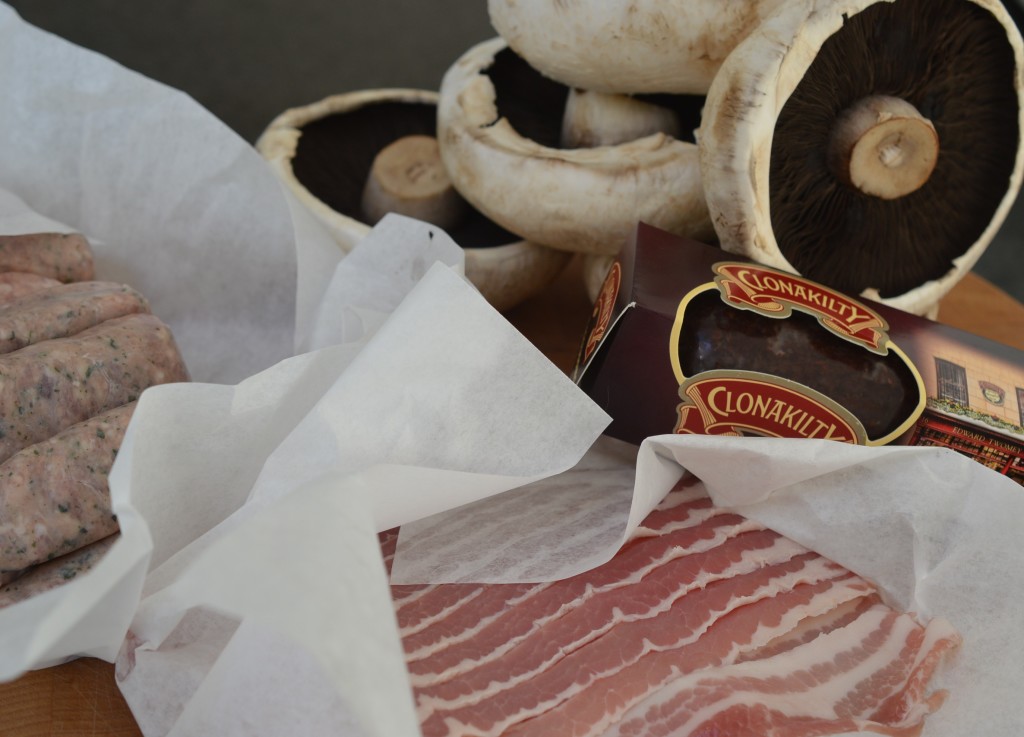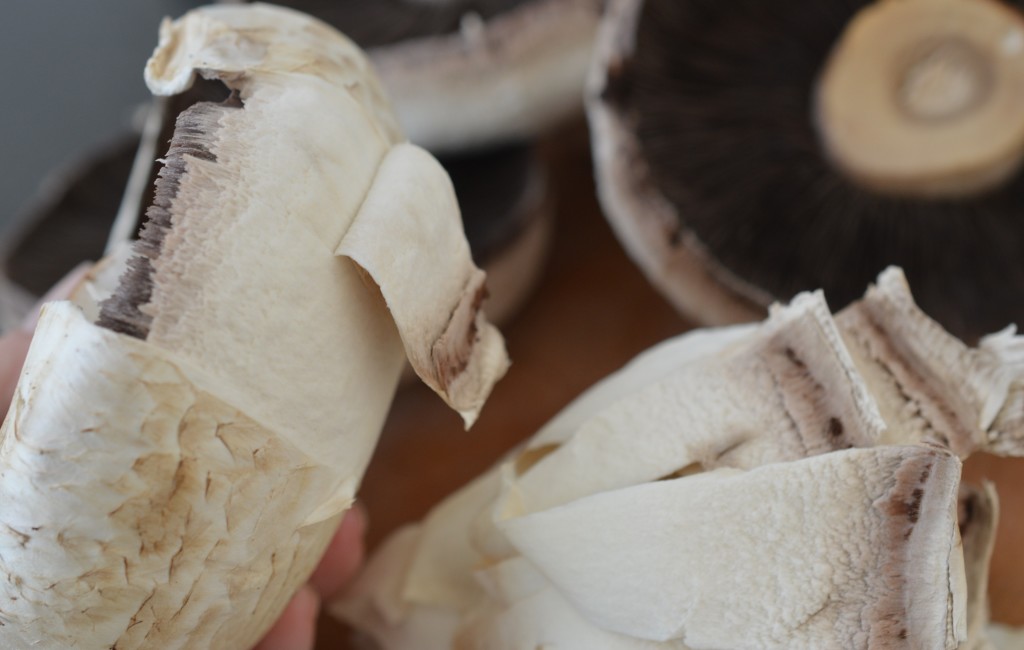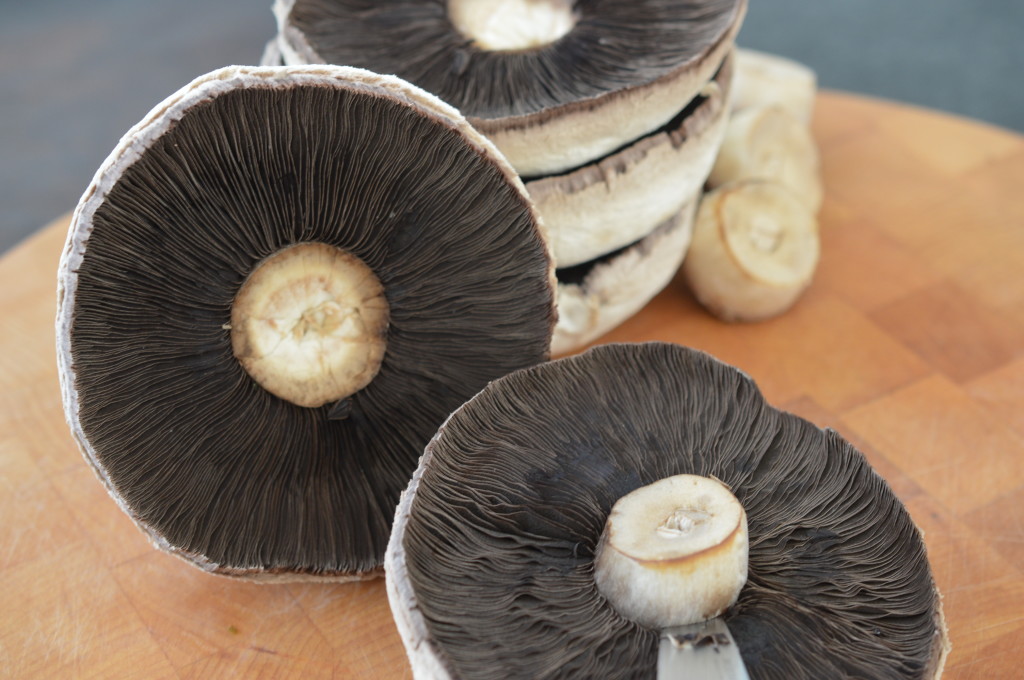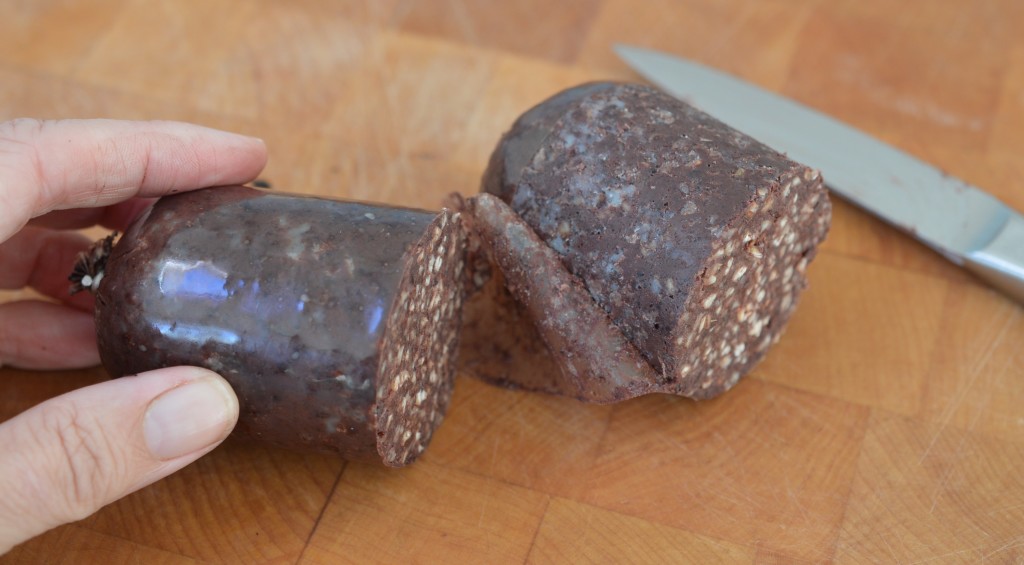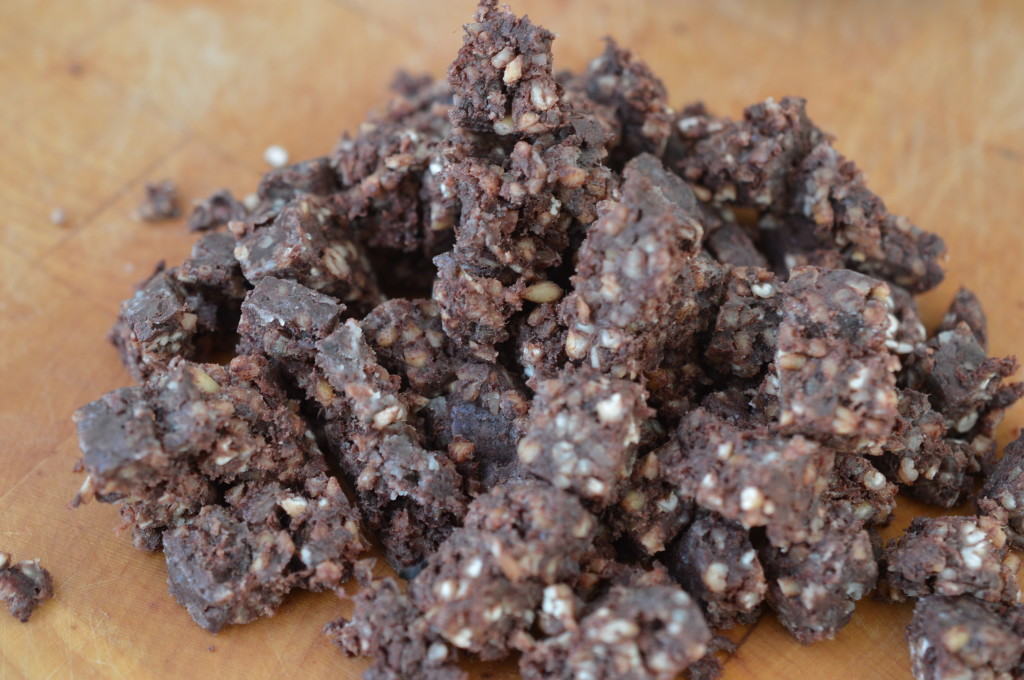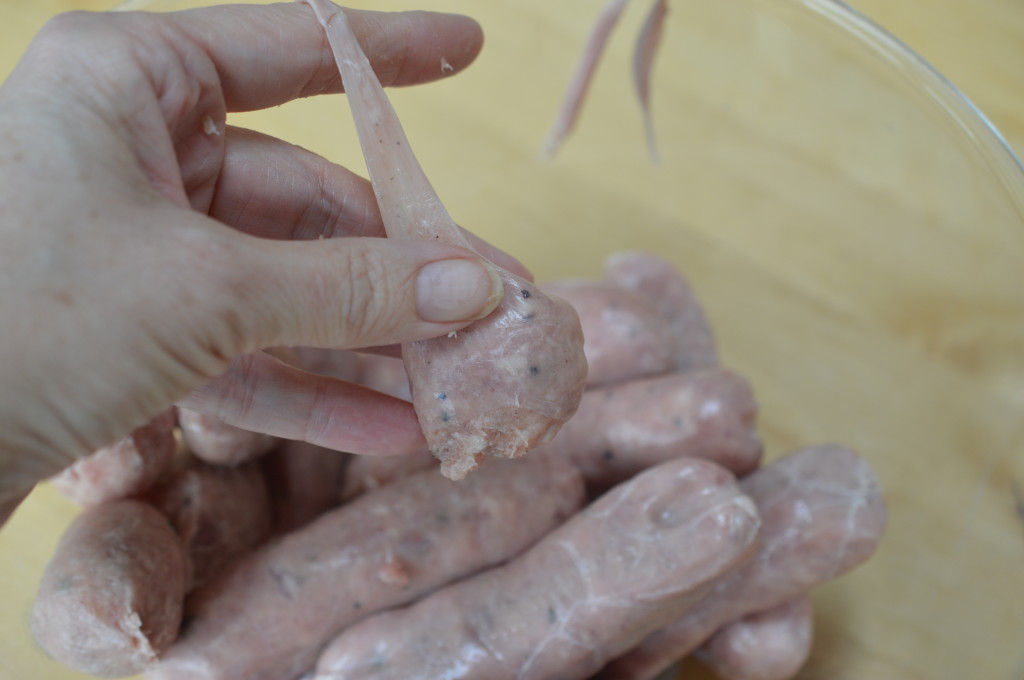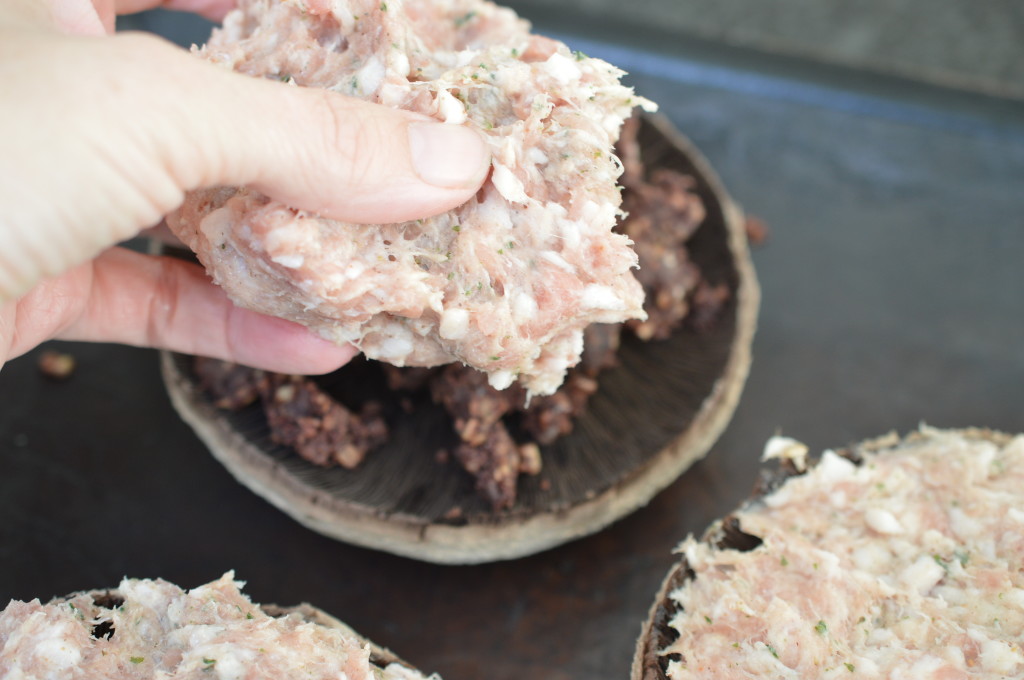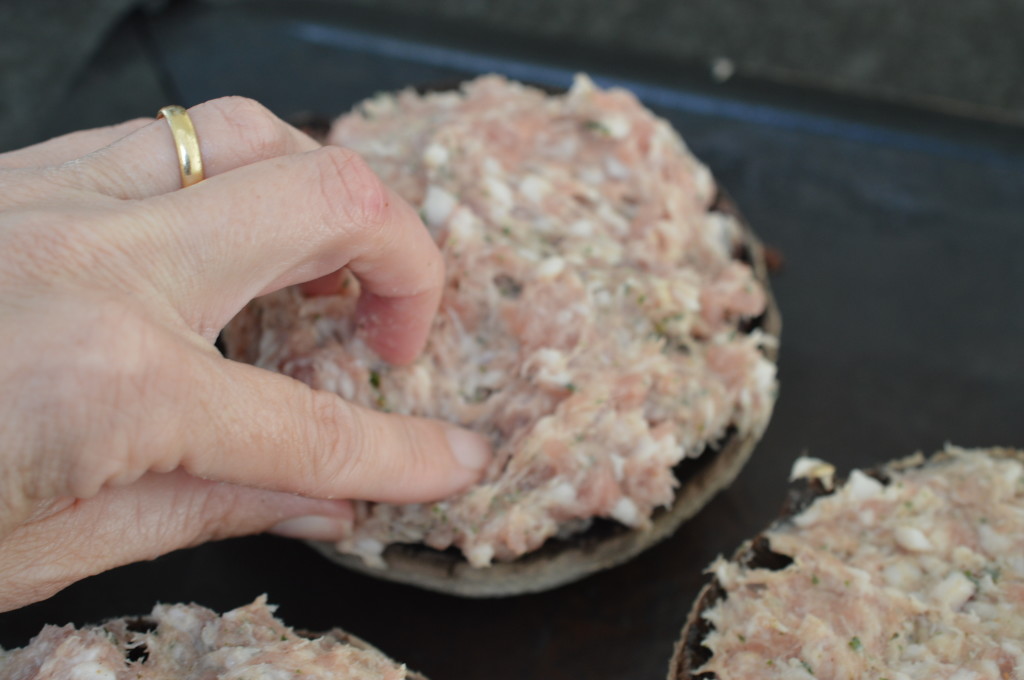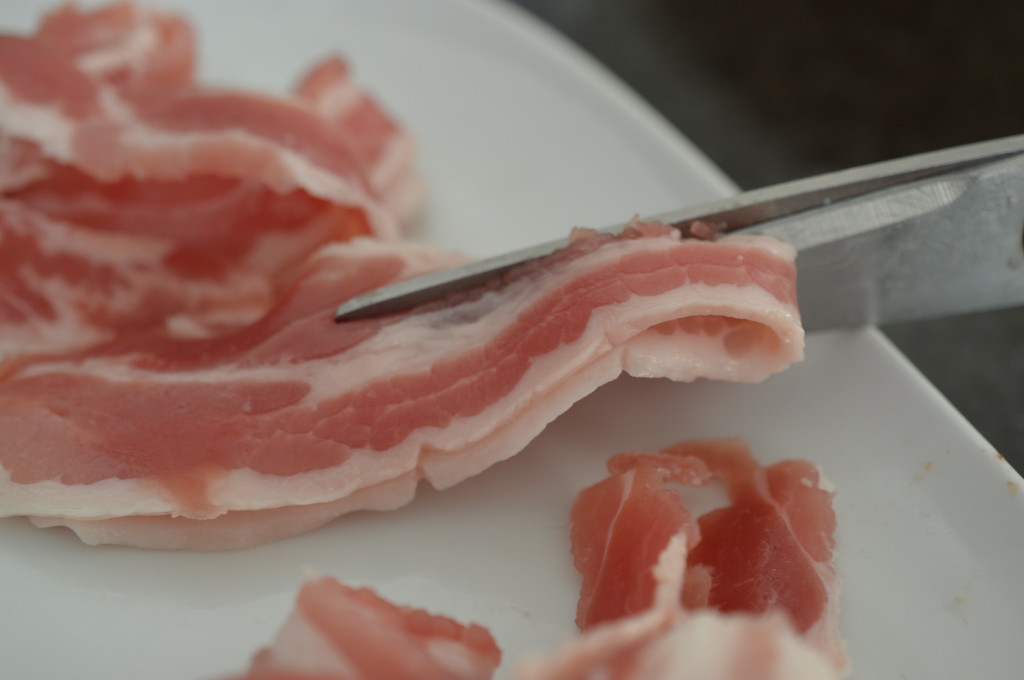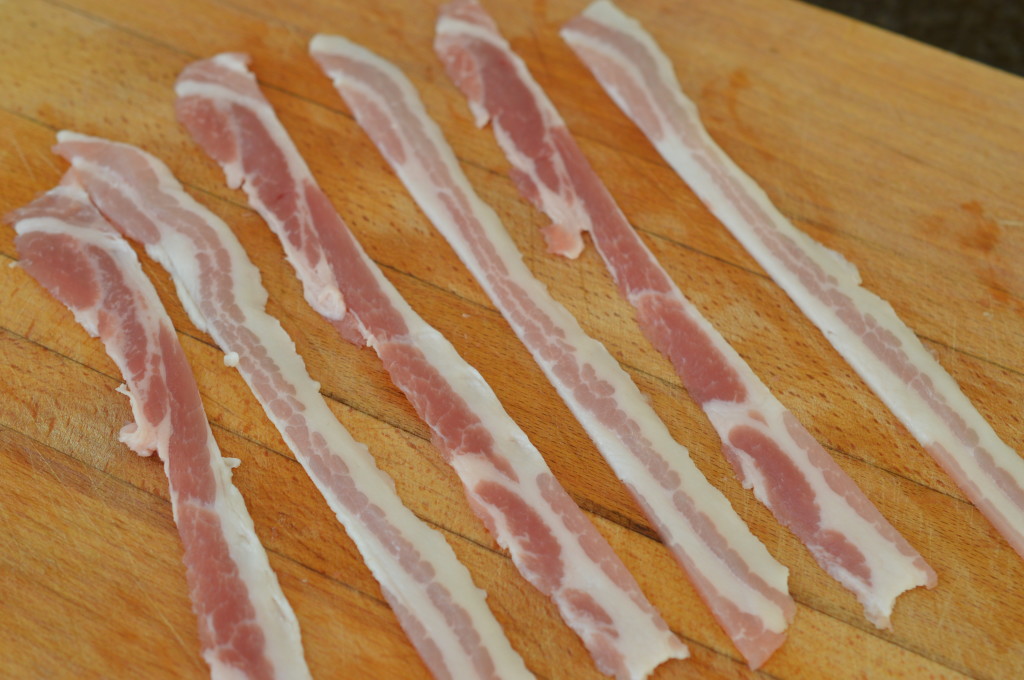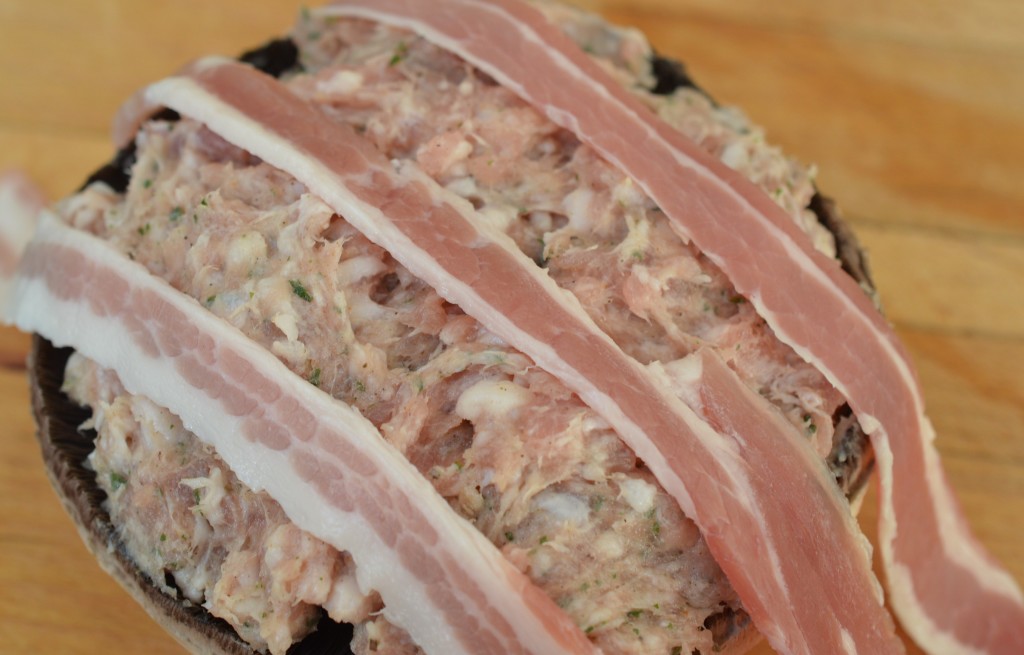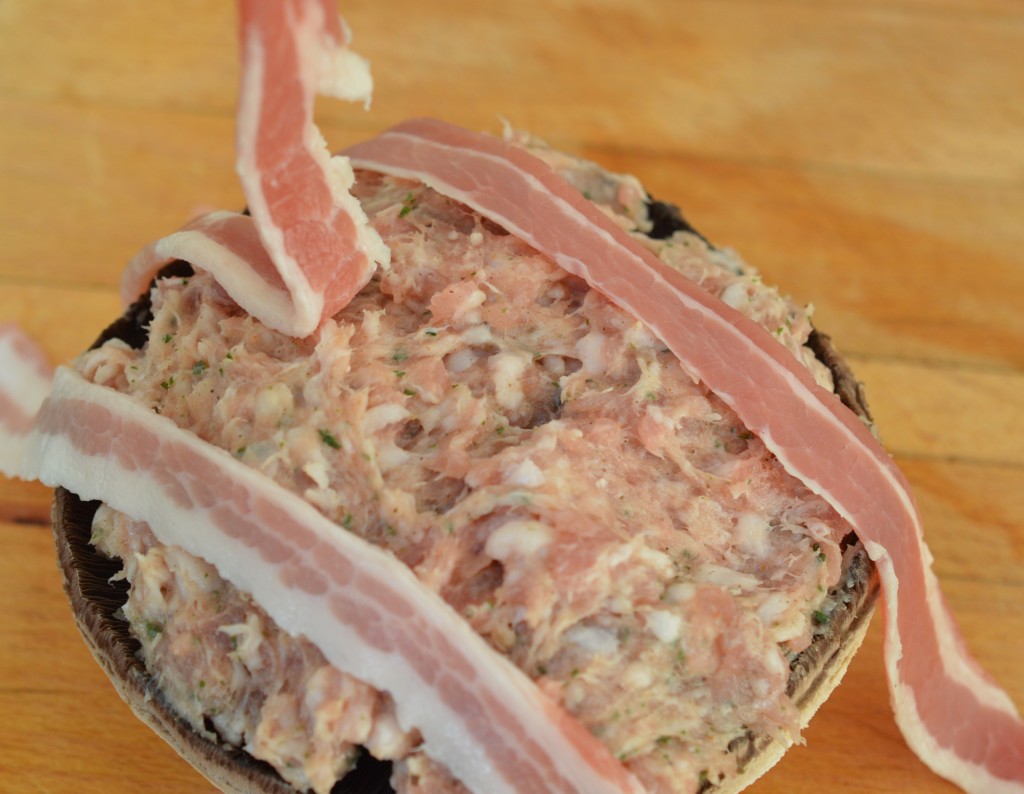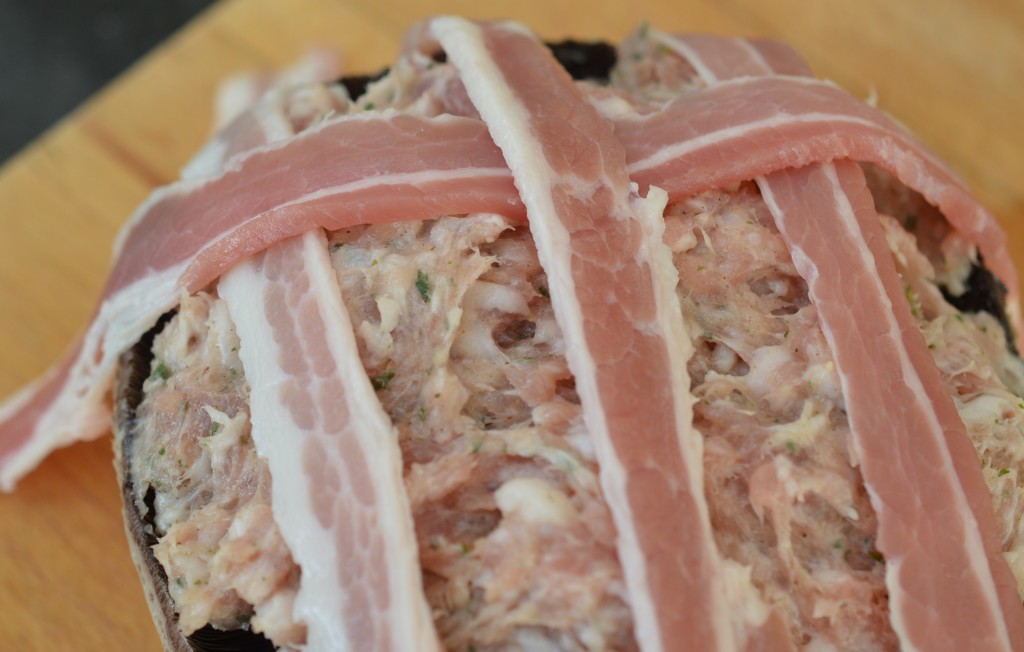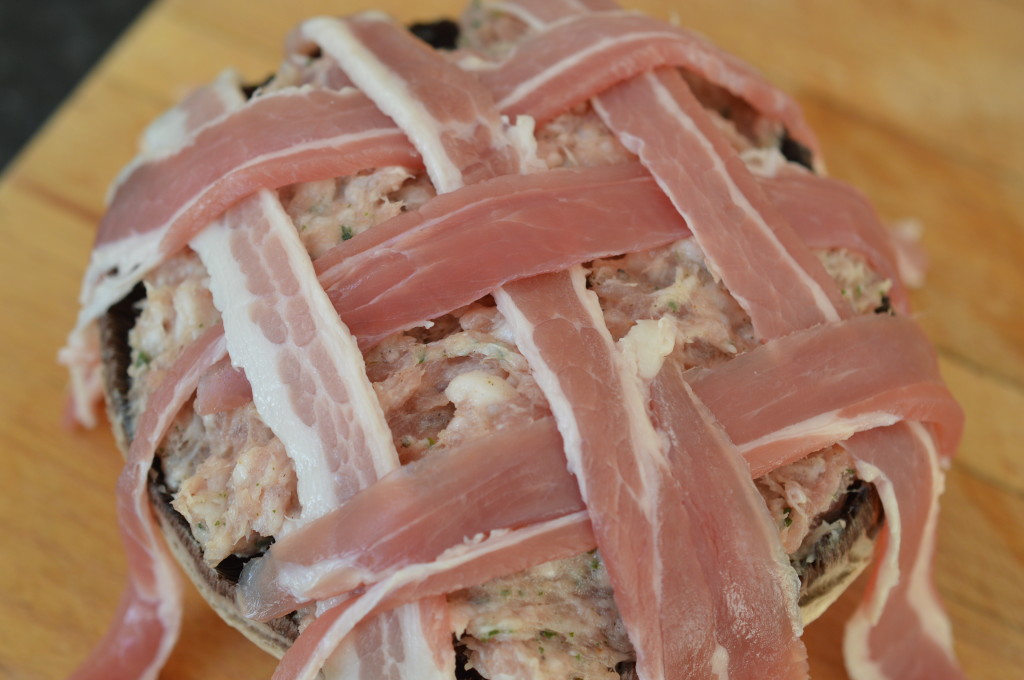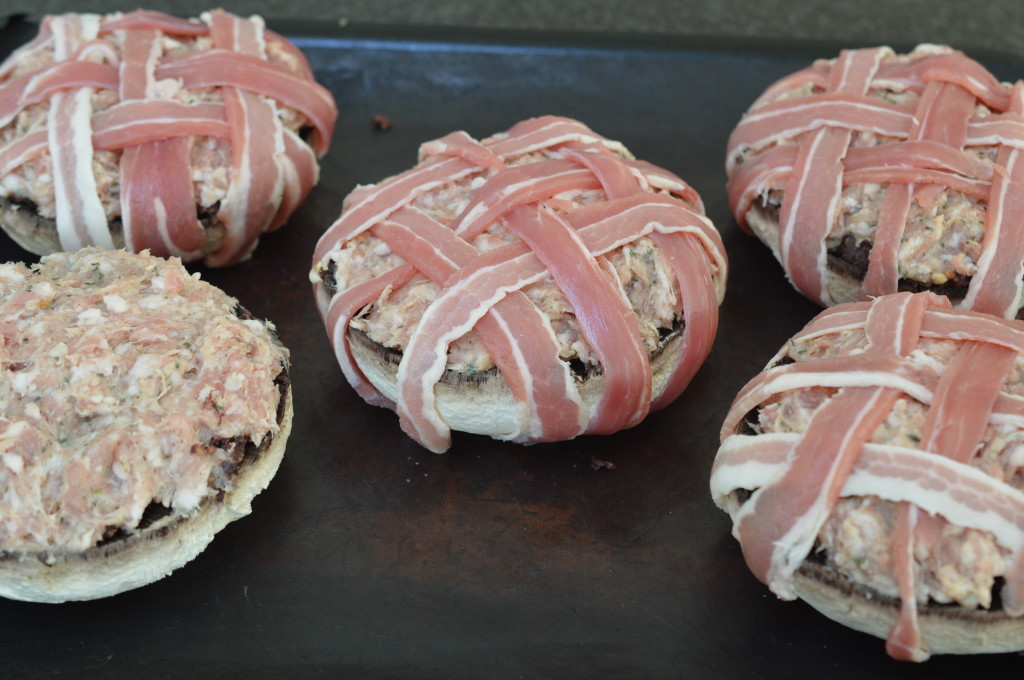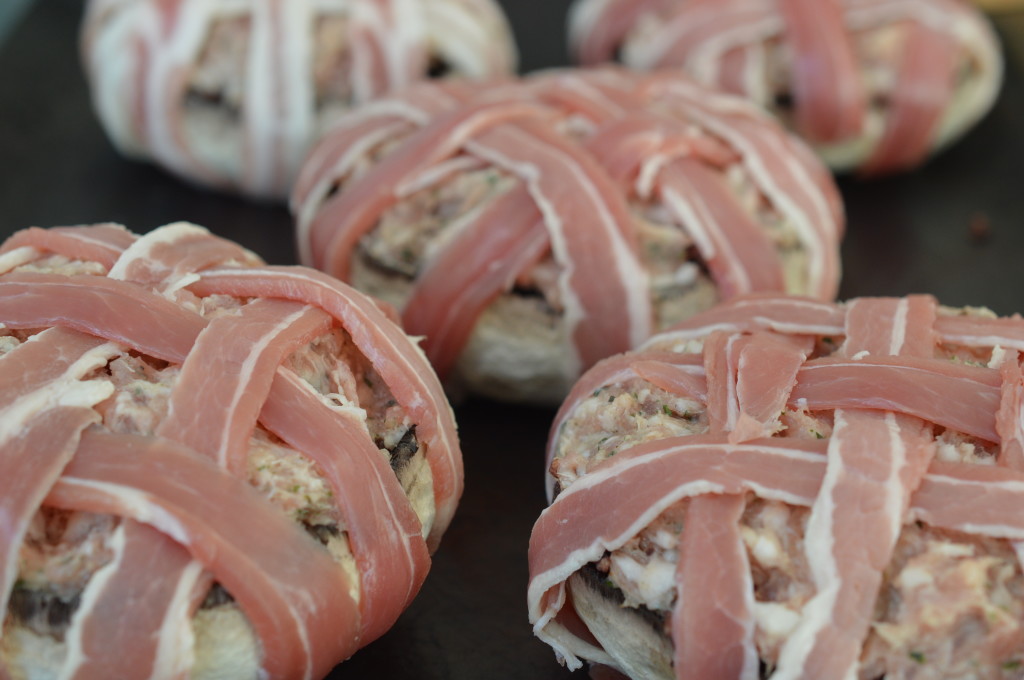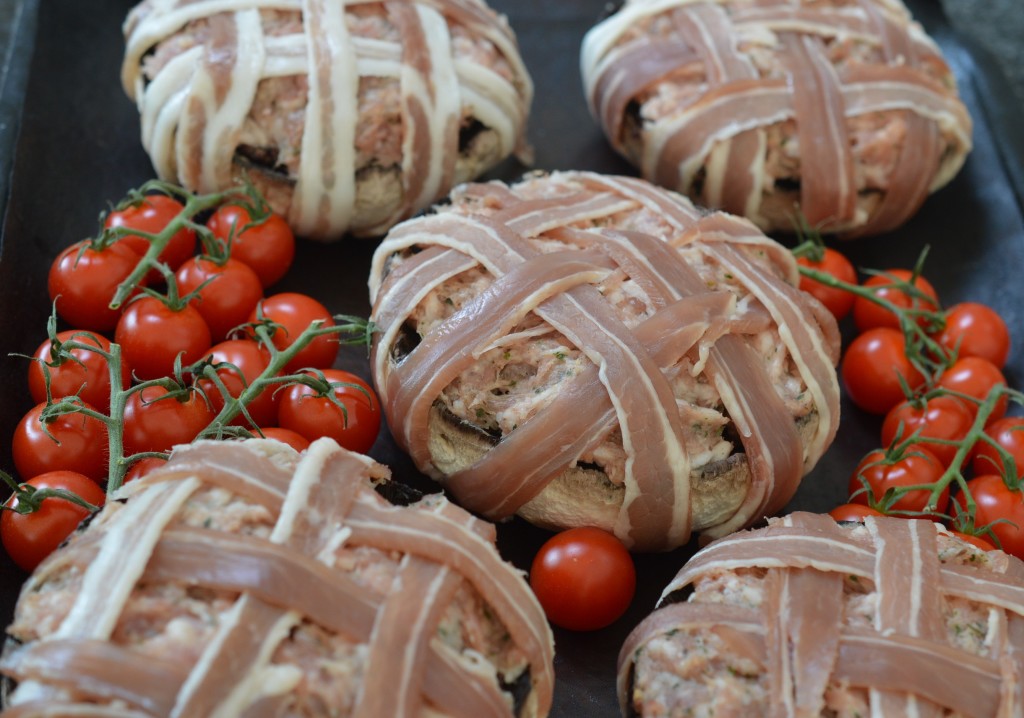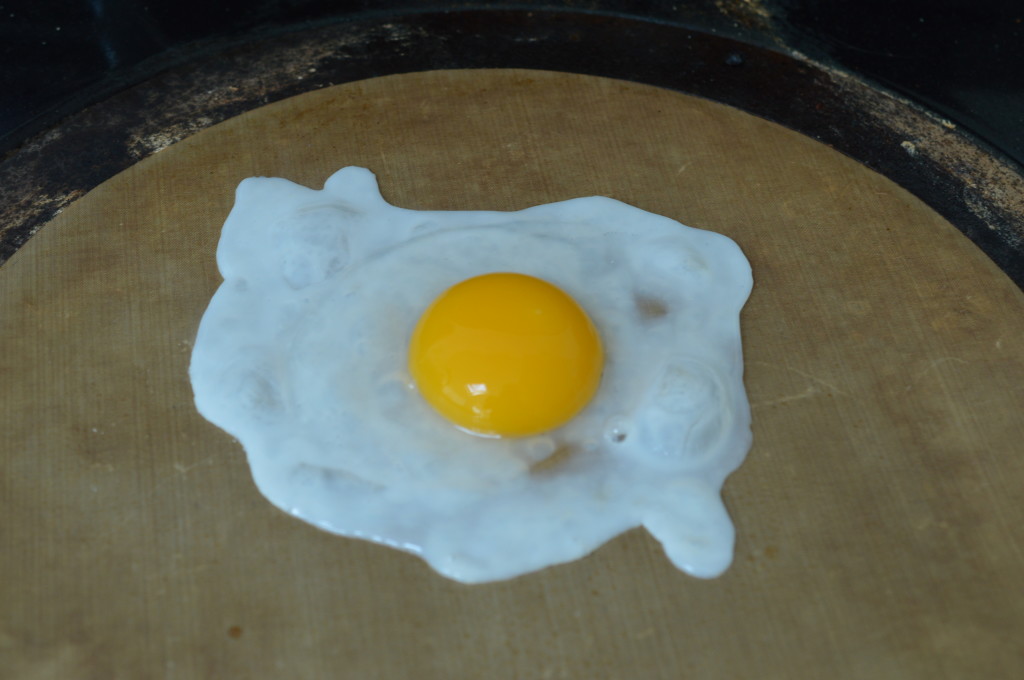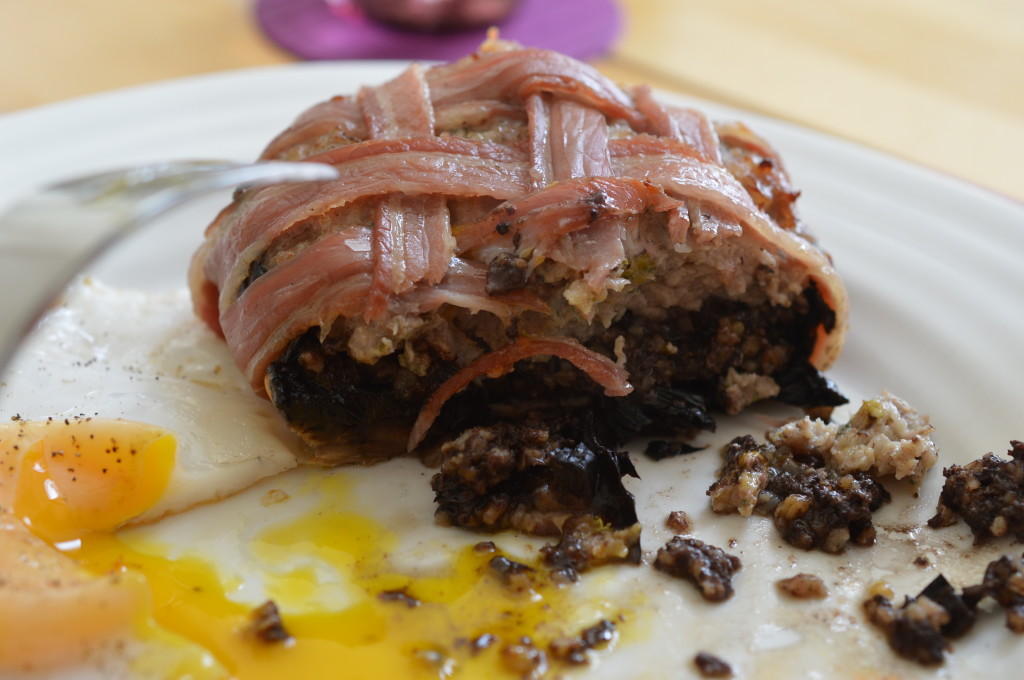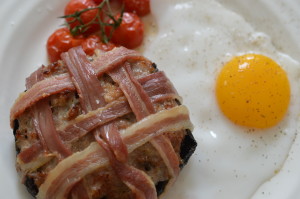How to cook a sausage ..
I’m very bossy and opinionated on the subject of sausages.
I buy mine in natural casings and from a butcher who loves making them – and that’s important. Sausages have always been a ‘suspect’ product. The Victorians called them ‘little bags of mystery’ because there was no way of knowing what might have been put inside.
What there will be, in a great sausage, is fat. Yes, I know. Fat makes you fat, but you should know this isn’t a healthy eating option and there’s not a lot of point in pretending it is. For me, that means I buy quality sausages and I eat them occasionally. There really are few pleasures in life to compete with a sausage sandwich – cooked properly. (Told you I am bossy on this subject.) I don’t want to risk my arteries on a dried up/burnt/suspiciously undercooked/greasy sausage.
If I’m going to eat it – and I am – it’s got to be good. Having selected a good quality, well seasoned sausage with a nice balance of meat and fat .. don’t prick it. There’s absolutely no need to do it and every reason not to. If you pierce the skin all those wonderful juices will end up in your frying pan and you’ll be left with a dry sausage.
The whole ‘first prick your sausage’ came about after the outbreak of the first world war. With meat in short supply sausages were stuffed with whatever scraps were available. To that was added cereal and water to bulk them out. When the soldiers cooked them on shovels set over open fires they spluttered and burst. They no longer do that, but ‘banger’ is still slang for sausage.
Beans, bangers and mash being a staple of British culinary life .. and where I was headed today. ‘Beans’ being my homemade baked beans which I slow cooked overnight. ‘Mash’ being the buttery mashed potatoes and the ‘bangers’ meaty pork sausages. My youngest has a heavy cold and this is medicine on a plate. Pure comfort food.
In my very opinionated opinion, there are two ways to cook a sausage. The first is s-l-o-w-l-y over the lowest of low heats. Put some groundnut/sunflower oil in a frying pan and set it on a low heat. You’ll need to watch it and constantly turn the sausage so it cooks evenly. There’s no rushing this – a fat sausage will take between 25 and 30 minutes.
My preferred method is to first poach my sausage. Set a pan of water over a high heat and bring it to a boil.
There is really no way of making this photogenic. Put the uncooked, separated sausages in the water. Reduce the heat and let them poach at a gentle plop for 10 minutes.
When their time is up, remove them to a plate. What you have now is a cooked, but visually unappealing, sausage.
Pat it dry as water will spit when it comes into contact with the oil in the frying pan.
Put some flavourless oil in the bottom of the frying pan. (No, you can’t grill them.)
What you are doing now is browning the outside. There’s no risk of the outside being done before the inside is cooked so this method allows you to turn the heat up. I fry mine over a medium to high heat.
Turn in the oil so all sides colour evenly.
Never again will you allow anyone to cremate a beautiful sausage on a barbecue. When it’s coloured to your liking, lift out of the frying pan and drain on kitchen paper.
And, that’s it. How to cook a sausage.
Eat.
- Sausages – the best you can find and from a supplier you trust.
Bring a saucepan of water to a boil. Reduce the heat and add the raw sausages. Poach at a gentle simmer for 10 minutes. Remove the sausages from the water and allow them to cool slightly.
Put some flavourless oil in a frying pan and place over a medium-high heat.
Pat the sausages dry with kitchen paper. Then, add them to the frying pan. Fry until all sides of the sausage is coloured to your liking.
Remove from the frying pan and allow excess grease to drain away.
Eat.
